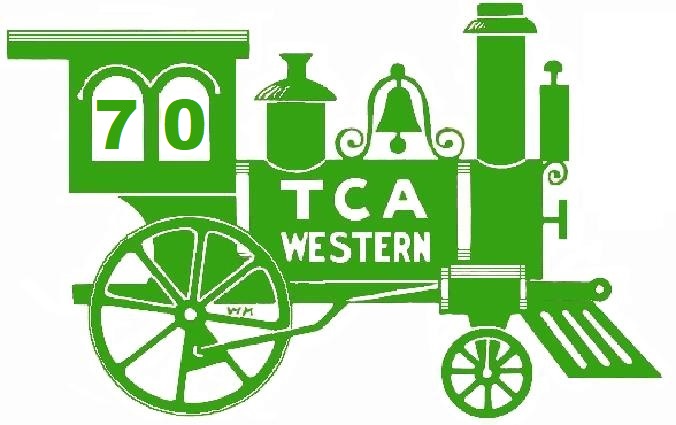Athearn is a United States manufacturer of model railroad
equipment, produced and distributed by American hobby manufacturer Horizon Hobby, Inc. of
Champaign, Illinois, USA.
Athearn 'O' scale Metal & Wood 40' Steel Box Car Kits
The company's history began in 1938, when it's founder-to-be, Irvin R. Athearn (1904 - 1991), started
an elaborate 'O' scale layout in his mother's house that he was constantly modifying. A few years later, Irv valued his 'O'
collection at $10,000 and placed an ad in Model Railroader magazine to sell it. After receiving much response to it,
Irv decided that selling model railroads would be a good living. He sold 'O' scale motive power and box car kits and
other train products out of his mother's house through most of the 1940's via mail order. The first products sold by
Athearn were metal 'O' scale kits. Some parts for early 'O' scale kits were machined by Bill J. Lenoir.
1940's ads by Athearn in Model Railroader magazine state 'O' gauge only!
After becoming a full-time retailer in 1946, Irv opened a separate facility in Hawthorne, California in 1948.
That same year he branched out into HO kits for the first time. The early HO kits were stamped steel box cars and
refrigerator cars sold through the Overnight Distributing Service. Initially Irv Athearn acted as a retailer of model train
products, not a manufacturer. He began to offer his first manufactured products in 1948.
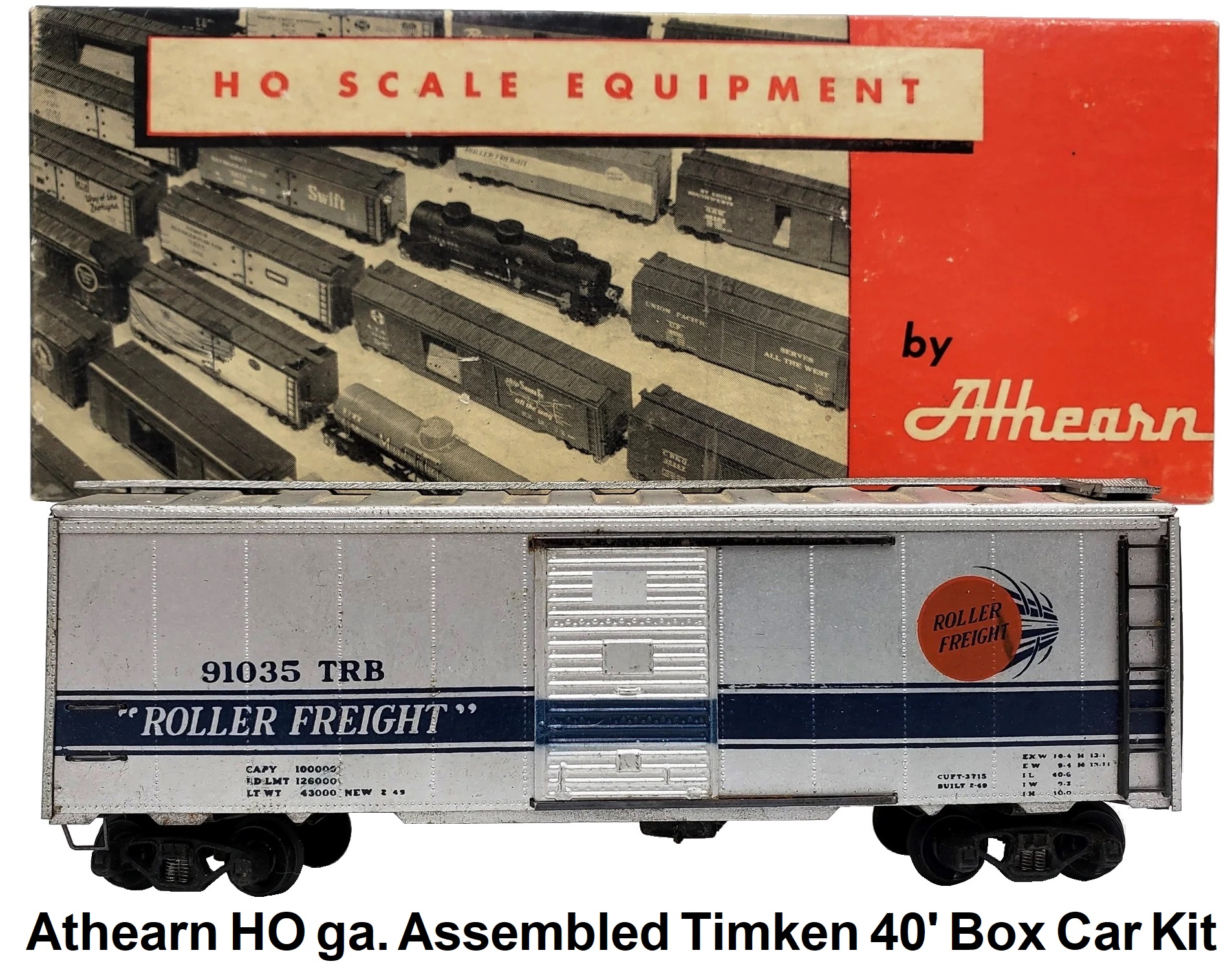 The Athearn 1948 catalog was replete with a lineup of fully painted metal and wood freight car kits in
both 'O' scale and HO scale. The same heralds were available in both scales. 40' AAR type box cars that featured more than
one color paint were referred to as "Hot Shots" or fast freight "Specials". These 'O' scale kits sold for $5, while the HO
kits were priced at $2.75 each. Well recognized road names included NYC Pacemaker, Baltimore & Ohio Time-Saver, Southern
Pacific Overnight and Timken Roller Freight. The less-colorful (Tuscan, brown, or auburn) painted 40' box car lineup had 'O'
scale versions for $4.50 and HO scale sold for $2.50. Road names included in this grouping consisted of Burlington C.B.&Q.,
Pere Marquette, Santa Fe, Atlantic Coast Line, Great Northern, New York, New Haven & Hartford and many more. There were
several new offerings also offered in HO scale only. This included the 50' double door ($2.75), 40' double door ($2.65) and
40' single door ($2.50) steel 'Round Roof' box cars. These all came in 4 road names - Pennsy, D.T.&I., Seaboard Air Lines
and Norfolk & Western. Both 'O' scale ($5) and HO scale ($2.75) 50' double door automobile car kits were also offered fully
painted. Three tank car offerings in HO only were the 12,000 gallon 3-dome ($2.75), 12,000 gallon single dome ($2.50) and the
10,000 gallon 'shorty' single dome ($2.40). The 40' refrigerator car lineup again consisted of the same road names offered in
both 'O' scale ($5.75) and HO scale ($2.50). The catalog also listed 4 pages of freight car parts and their associated
pricing. The back catalog cover was emblazoned with the banner, "Scale Model Equipment for the Particular Model Builder".
The Athearn 1948 catalog was replete with a lineup of fully painted metal and wood freight car kits in
both 'O' scale and HO scale. The same heralds were available in both scales. 40' AAR type box cars that featured more than
one color paint were referred to as "Hot Shots" or fast freight "Specials". These 'O' scale kits sold for $5, while the HO
kits were priced at $2.75 each. Well recognized road names included NYC Pacemaker, Baltimore & Ohio Time-Saver, Southern
Pacific Overnight and Timken Roller Freight. The less-colorful (Tuscan, brown, or auburn) painted 40' box car lineup had 'O'
scale versions for $4.50 and HO scale sold for $2.50. Road names included in this grouping consisted of Burlington C.B.&Q.,
Pere Marquette, Santa Fe, Atlantic Coast Line, Great Northern, New York, New Haven & Hartford and many more. There were
several new offerings also offered in HO scale only. This included the 50' double door ($2.75), 40' double door ($2.65) and
40' single door ($2.50) steel 'Round Roof' box cars. These all came in 4 road names - Pennsy, D.T.&I., Seaboard Air Lines
and Norfolk & Western. Both 'O' scale ($5) and HO scale ($2.75) 50' double door automobile car kits were also offered fully
painted. Three tank car offerings in HO only were the 12,000 gallon 3-dome ($2.75), 12,000 gallon single dome ($2.50) and the
10,000 gallon 'shorty' single dome ($2.40). The 40' refrigerator car lineup again consisted of the same road names offered in
both 'O' scale ($5.75) and HO scale ($2.50). The catalog also listed 4 pages of freight car parts and their associated
pricing. The back catalog cover was emblazoned with the banner, "Scale Model Equipment for the Particular Model Builder".
Athearn 'O' scale Metal & Wood 40' Steel Reefer Kits
 Because raw materials were in shortage after WW2, Athearn resorted to acquiring sheet metal wherever it could obtain it.
Some Athearn kit-built freight cars have turned up with sides made from surplus Coke bottle cap material. The Coca-Cola
bottle cap printing is visible on the interior sides of the cars.
Athearn AAR type 40' 'O' scale box car kits used metal sides with the door openings punched out. The Athearn designs
used thin, stamped metal doors, sliding in U-channels. Roofs and car ends were also made of metal. The Athearn steel
reefer kit model was based on a PFE R40-14 aluminum prototype with a wood floor. The kit used aluminum parts too and
was the only 'O' scale model ever made that was true to a PFE aluminum prototype. Early metal Athearn kits built up
into pretty much the best looking models of their day; details included free standing ladders and grabs, separate roof
walks, teeny working door tracks, and stamped metal doors, just like the real railroads. These early kits were issued
in red, then yellow boxes.
Because raw materials were in shortage after WW2, Athearn resorted to acquiring sheet metal wherever it could obtain it.
Some Athearn kit-built freight cars have turned up with sides made from surplus Coke bottle cap material. The Coca-Cola
bottle cap printing is visible on the interior sides of the cars.
Athearn AAR type 40' 'O' scale box car kits used metal sides with the door openings punched out. The Athearn designs
used thin, stamped metal doors, sliding in U-channels. Roofs and car ends were also made of metal. The Athearn steel
reefer kit model was based on a PFE R40-14 aluminum prototype with a wood floor. The kit used aluminum parts too and
was the only 'O' scale model ever made that was true to a PFE aluminum prototype. Early metal Athearn kits built up
into pretty much the best looking models of their day; details included free standing ladders and grabs, separate roof
walks, teeny working door tracks, and stamped metal doors, just like the real railroads. These early kits were issued
in red, then yellow boxes.
Athearn 'O' scale Metal & Wood 50' Steel Double Door Box Car Kits
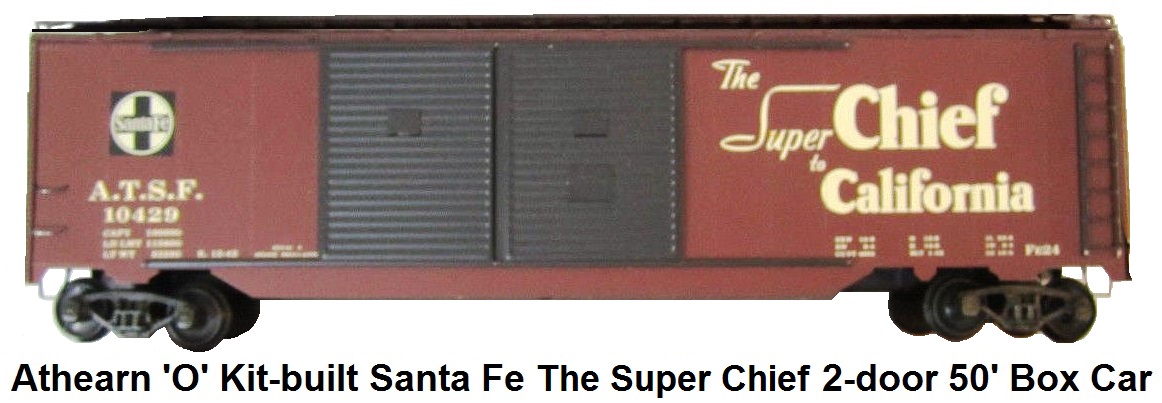
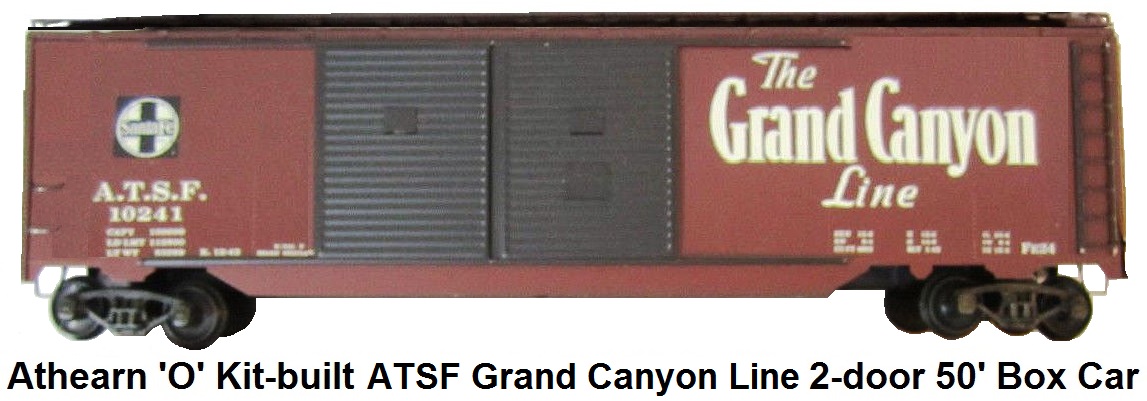
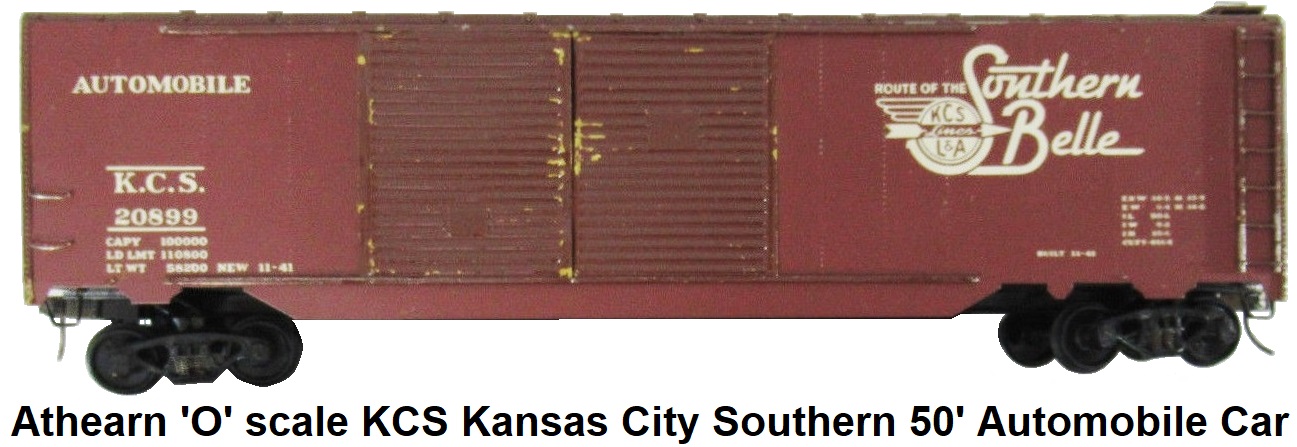


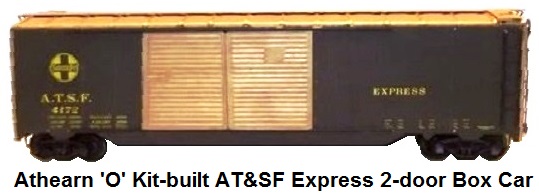
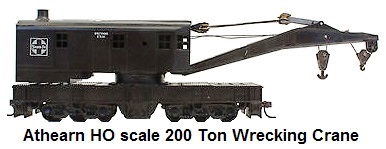 In 1951, Athearn introduced an HO scale diecast metal 200 ton wrecking crane. The boom could be raised and lowered, the hooks
could be made to go up and down and and the crane body could be swiveled. The car body was fitted with sprung 6-wheel
buckeye trucks. It was priced at $8.50 complete. Athearn acquired Milwaukee based Globe Models
product line of wood and brass kits on July 2, 1951. Globe Models
started producing their line of metal sided HO freight cars in 1949. The Globe box cars and refrigerator cars were
similar to Athearn car kits, as they had wood box shaped substructures and metal shells, but had die-cast roof walks and brass
car ends. The stock cars had plastic sides which deformed over time. They also made single dome and triple dome tank cars and
their own trucks. The tank cars were catalogued as 8,000 and 10,000 gallon sizes. Much of Globe's original tool and die work
In 1951, Athearn introduced an HO scale diecast metal 200 ton wrecking crane. The boom could be raised and lowered, the hooks
could be made to go up and down and and the crane body could be swiveled. The car body was fitted with sprung 6-wheel
buckeye trucks. It was priced at $8.50 complete. Athearn acquired Milwaukee based Globe Models
product line of wood and brass kits on July 2, 1951. Globe Models
started producing their line of metal sided HO freight cars in 1949. The Globe box cars and refrigerator cars were
similar to Athearn car kits, as they had wood box shaped substructures and metal shells, but had die-cast roof walks and brass
car ends. The stock cars had plastic sides which deformed over time. They also made single dome and triple dome tank cars and
their own trucks. The tank cars were catalogued as 8,000 and 10,000 gallon sizes. Much of Globe's original tool and die work
 was performed by Milwaukee master modeler Carl Traub. Traub and Frank Taylor were the founders of Globe Models in 1942. Much
like Varney, Globe kits were very similar to Athearn metal kits in general "tab in slot"
construction. Over time, Irv Athearn would continue to improve upon the line, introducing a comprehensive array of
locomotive, passenger and freight car models.
was performed by Milwaukee master modeler Carl Traub. Traub and Frank Taylor were the founders of Globe Models in 1942. Much
like Varney, Globe kits were very similar to Athearn metal kits in general "tab in slot"
construction. Over time, Irv Athearn would continue to improve upon the line, introducing a comprehensive array of
locomotive, passenger and freight car models.
Globe HO Scale Wood & Metal Craftsman Kit-built 40' AAR Box Cars
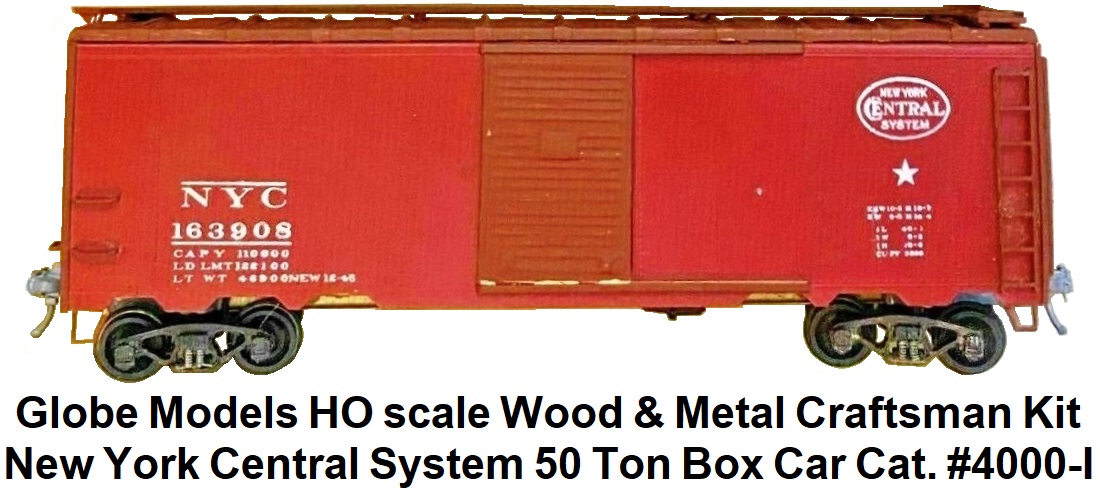
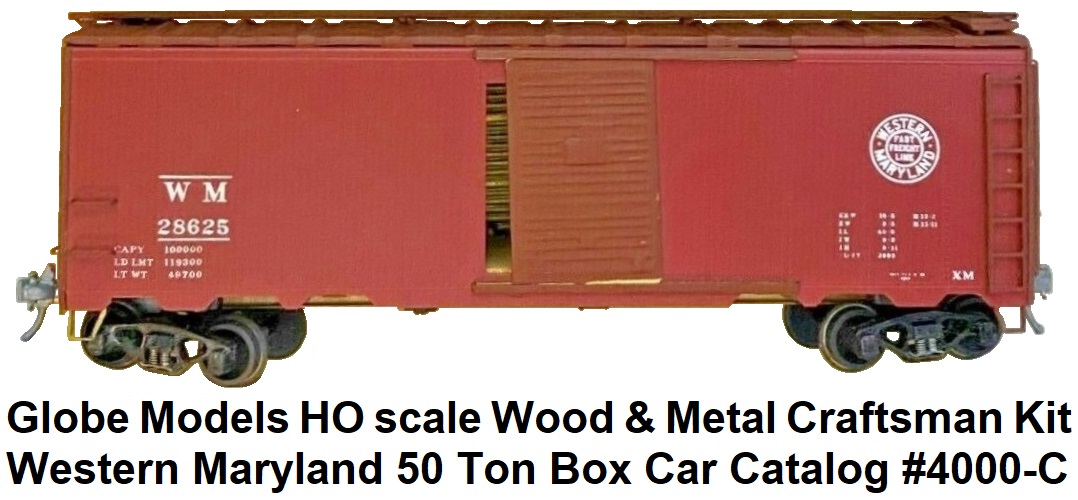
Athearn HO Scale Wood & Metal Craftsman Kit-built 40' AAR Box Cars
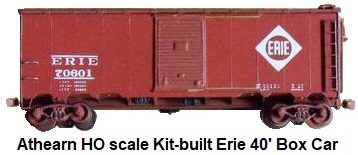
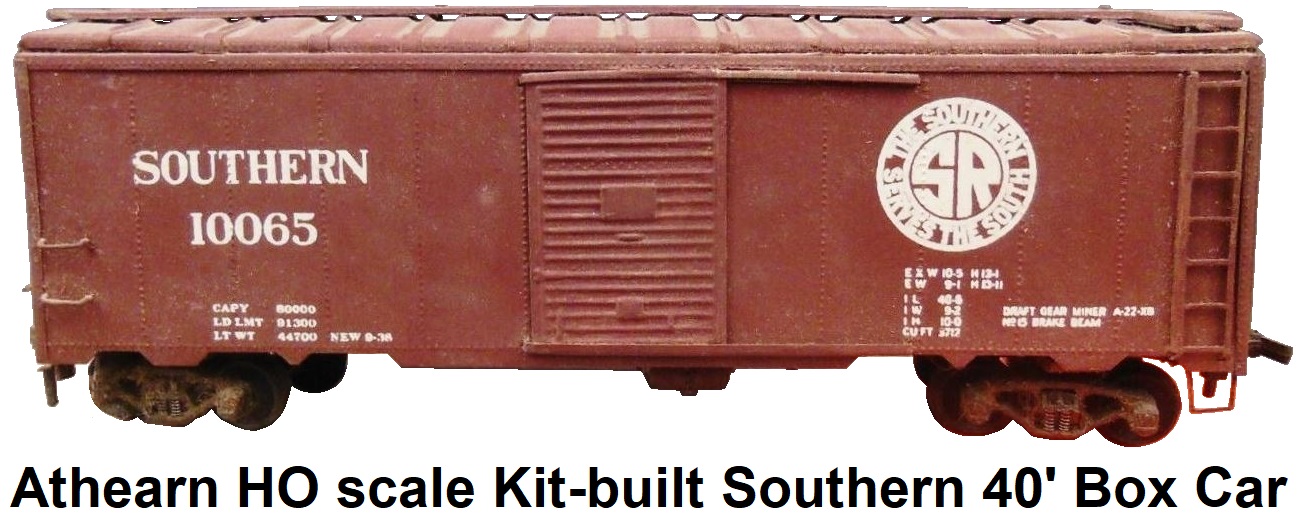
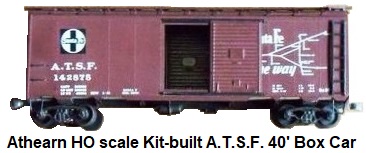
In 1953 Athearn introduced its models of the Budd Rail Diesel Cars (RDC) with metal bodies. These were
offered in the catalog as RDC-1, RDC-2, RDC-3 and RDC-4 complete kits for $14.95 each. These were Athearn's first HO scale
motive powered units, and they were the first HO models of these popular people movers that had started to appear on American
Railroads in 1949. Unpowered HO RDC trailer kits were also offered by Athearn at $6.95 each. Later on in 1958 Athearn
reintroduced these Budd models with injection-molded plastic bodies. The 1954 Athearn catalog showed additional new car
kits available in the form of 50' ($1.95) and 40' ($1.85) HO scale flat cars. The catalog also offered a series of
buildings in both 'O' and HO scale made of corrugated aluminum sheeting.
Supposedly, Globe had developed an injection molded plastic EMD F7 A and B unit in HO scale during the very
early 1950's, but never actually marketed them. Whatever the origin, Athearn started producing them under the Globe name in
1954. It is believed that Irv Athearn was concenred that the HO scale market that regularly purchased his wood and metal kits
would be reluctant to accept Athearn branded plastic kits. These plastic engines originally came as unpowered dummy units
painted in gold and sold for less than $1 each. Eventually unpainted A and B units in silver plastic were issued. Because they
were inexpensive, a flurry of interest developed amongst modelers and hobbyists to also acquire powered chassis, decals and
paint to customize and finish them. Initially Irv Athearn used the Globe name to test the market for these plastic kits. It is
believed that the sudden demand for decals allowed the Wm. K. Walthers Co. to turn around their
business, which was not doing well during this time. And then Athearn issued the first 2 decorated kits - Santa Fe red-and-
silver Warbonnet and the Union Pacific yellow with red lettering. After seeing the success, Irv moved the Globe Models F7's
to the Athearn brand name in 1956.
Early on, Irv Athearn recognized the importance of time and value to his customers. He introduced "an entirely
new principle in HO car construction," a reefer kit with a preassembled body and spot-welded underframe—a
precursor to the popular Ready-to-Roll line. Athearn continued to shake up the model train industry through
the years, consistently marketing their products as innovations in quality, workmanship and excellent value.
Irv Athearn’s ability to recognize new trends and change with the times allowed the company to strike with a flaming
iron. For instance, in 1956, Athearn released the EMD F7 diesel utilizing a revolutionary 'Hi-F' drive mechanism, employing
small rubber bands as drive belts to transfer motion from the can motor spindle to the axles. The Hi-F stands for 'high
friction' and the drive facilitated providing power to all 4 axles on a 4-axle, 2-truck locomotive. Use of these Hi-F rubber
band drives facilitated smooth and quiet operation, much quieter than gear driven engines.
 The GP9 followed in 1957 as the first detailed diesel model 100% tooled by Athearn (the F7 was partially done by Globe, an
Athearn buyout), and received the same level of success, becoming a classic and widely-used locomotive in many model
railroaders' collections. The GP9 was also fitted with the Hi-F can motor system with rubber band drive. This system worked
well for the early Globe F7's, but it was a tight fit inside the narrower body of the GP9, and the rubber bands dried out over
time. To meet the needs of advancing model train design, a new system consisting of a narrower electric can motor and a geared
drive was constructed. Pittman, a large manufacturer of DC motors, was chosen to produce the motor
to power the new 'Blue Box' drive. The Pittman based system featured a gear drive consisting of a series of sprockets
which interconnect inside the locomotive's trucks and drive each axle. A major improvement in this system was the
ability to have all the locomotive's wheels pick up electricity from the track, where as the early Athearn models
only used one truck and required insulation on the other to draw track power. Another innovation that came later
was the double-ended ring magnet motor, which permitted easy connection to all-wheel-drive assemblies. The 1957 catalog
offered complete Athearn HO scale train sets for the first time. To facilitate this new product line, Athearn was now
offering more and more ready-to-run plastic trains. Individual pieces could be purchased as undecorated kits,
decorated kits, or decorated ready-to-run. The 1957 catalog offered passenger cars, cabooses, and a ready-to-run, Hi-F
powered Porter Yard switcher engine.
The GP9 followed in 1957 as the first detailed diesel model 100% tooled by Athearn (the F7 was partially done by Globe, an
Athearn buyout), and received the same level of success, becoming a classic and widely-used locomotive in many model
railroaders' collections. The GP9 was also fitted with the Hi-F can motor system with rubber band drive. This system worked
well for the early Globe F7's, but it was a tight fit inside the narrower body of the GP9, and the rubber bands dried out over
time. To meet the needs of advancing model train design, a new system consisting of a narrower electric can motor and a geared
drive was constructed. Pittman, a large manufacturer of DC motors, was chosen to produce the motor
to power the new 'Blue Box' drive. The Pittman based system featured a gear drive consisting of a series of sprockets
which interconnect inside the locomotive's trucks and drive each axle. A major improvement in this system was the
ability to have all the locomotive's wheels pick up electricity from the track, where as the early Athearn models
only used one truck and required insulation on the other to draw track power. Another innovation that came later
was the double-ended ring magnet motor, which permitted easy connection to all-wheel-drive assemblies. The 1957 catalog
offered complete Athearn HO scale train sets for the first time. To facilitate this new product line, Athearn was now
offering more and more ready-to-run plastic trains. Individual pieces could be purchased as undecorated kits,
decorated kits, or decorated ready-to-run. The 1957 catalog offered passenger cars, cabooses, and a ready-to-run, Hi-F
powered Porter Yard switcher engine.
 Starting in the mid-1950's, Athearn produced shortened versions of streamlined and heavyweight passenger
cars based on Southern Pacific and Atchison, Topeka and Santa Fe prototypes. The company also offered a variety
of freight cars with sprung and equalized trucks. The cars could be obtained in simple kit form, or ready-to-run.
The comprehensive scope of the product line contributed to the popularity of HO as a model railroad scale, due to
the ready availability of items and their low cost.
Starting in the mid-1950's, Athearn produced shortened versions of streamlined and heavyweight passenger
cars based on Southern Pacific and Atchison, Topeka and Santa Fe prototypes. The company also offered a variety
of freight cars with sprung and equalized trucks. The cars could be obtained in simple kit form, or ready-to-run.
The comprehensive scope of the product line contributed to the popularity of HO as a model railroad scale, due to
the ready availability of items and their low cost.
 In the early 1950's Irv Athearn sold the 'O' scale line of craftsman wood and metal kits to George
Menzies. It was sold to Robert V. Reynolds of Reynolds Railroad Products, Indianapolis, Indiana around twenty years later.
The 'O' scale line then passed through various hands including Pacific HO, Jan Lorenzen of Locomotive Workshop
in New Jersey, Old Pullman Model Railroads in Florida, and Jim Watson (BoxCar Jim). After Athearn discontinued 'O' scale
manufacturing the company concentrated solely on HO scale products. Kits became simplified and were issued in blue boxes
where the modeler only had to screw on the trucks and add a few parts here and there. The HO kits were now becoming entirely
made of plastic, and the wood and metal kits were disappearing from the line. Athearn metal and wood kits were revived for a
time in the 1960's by G. F. Menzies, who had acquired them from Athearn. Menzies also offered the former Athearn line of metal
kits as separate parts. Since these metal parts were much thinner than the plastic ones that were commonly found on
manufactured car kits during this period, modelers replaced the clunky plastic pieces with these to obtain a more prototypical
look. Menzies became D. J. Baker Co. in the 1980's, and was still selling the 40' and 50' double-door round roof box car kits
and the 40' AAR box and 40' steel reefer kits. In 1990 the Menzies line of freight car kits was purchased from the D.J. Baker
Co. by Bowser Manufacturing of Montoursville, PA.
In the early 1950's Irv Athearn sold the 'O' scale line of craftsman wood and metal kits to George
Menzies. It was sold to Robert V. Reynolds of Reynolds Railroad Products, Indianapolis, Indiana around twenty years later.
The 'O' scale line then passed through various hands including Pacific HO, Jan Lorenzen of Locomotive Workshop
in New Jersey, Old Pullman Model Railroads in Florida, and Jim Watson (BoxCar Jim). After Athearn discontinued 'O' scale
manufacturing the company concentrated solely on HO scale products. Kits became simplified and were issued in blue boxes
where the modeler only had to screw on the trucks and add a few parts here and there. The HO kits were now becoming entirely
made of plastic, and the wood and metal kits were disappearing from the line. Athearn metal and wood kits were revived for a
time in the 1960's by G. F. Menzies, who had acquired them from Athearn. Menzies also offered the former Athearn line of metal
kits as separate parts. Since these metal parts were much thinner than the plastic ones that were commonly found on
manufactured car kits during this period, modelers replaced the clunky plastic pieces with these to obtain a more prototypical
look. Menzies became D. J. Baker Co. in the 1980's, and was still selling the 40' and 50' double-door round roof box car kits
and the 40' AAR box and 40' steel reefer kits. In 1990 the Menzies line of freight car kits was purchased from the D.J. Baker
Co. by Bowser Manufacturing of Montoursville, PA.
1957 was a big year for Athearn and its HO product line. In addition to the introduction of the
GP9 diesel, this was the year that witnessed the release of the steel off-set cuploa caboose, the 4-truck heavy duty flat
car and the 40' AAR type sliding door box car in plastic. The box cars were catalogued for $.89 in upainted kit form
with trucks. Ready-to-run versions sold for $1.98. The steel caboose in kit form sold for $1.29 ($2.49 ready-to-run). And the
new 4-truck flat kit was priced at $1.29. The plastic 40' box car model was very popular and remained in the Athearn line
unchanged through 2009. Original road names for the box car in 1957 were Burlington, Chicago & Northwestern, Lackawanna and
Union Pacific. A large variety of additional road names were issued during the next several production runs of this model
over the years. As well, Athearn licensed unmarked/unpainted versions of these box cars to other companies, such as Bev-Bel,
who decorated them in a variety of road names not produced or offered by Athearn. Athearn also did special runs of these box
cars custom decorated for organizations and clubs.
Athearn HO Scale Blue Box Injection Molded Plastic 40' Steel AAR Box Car Kits & RTR
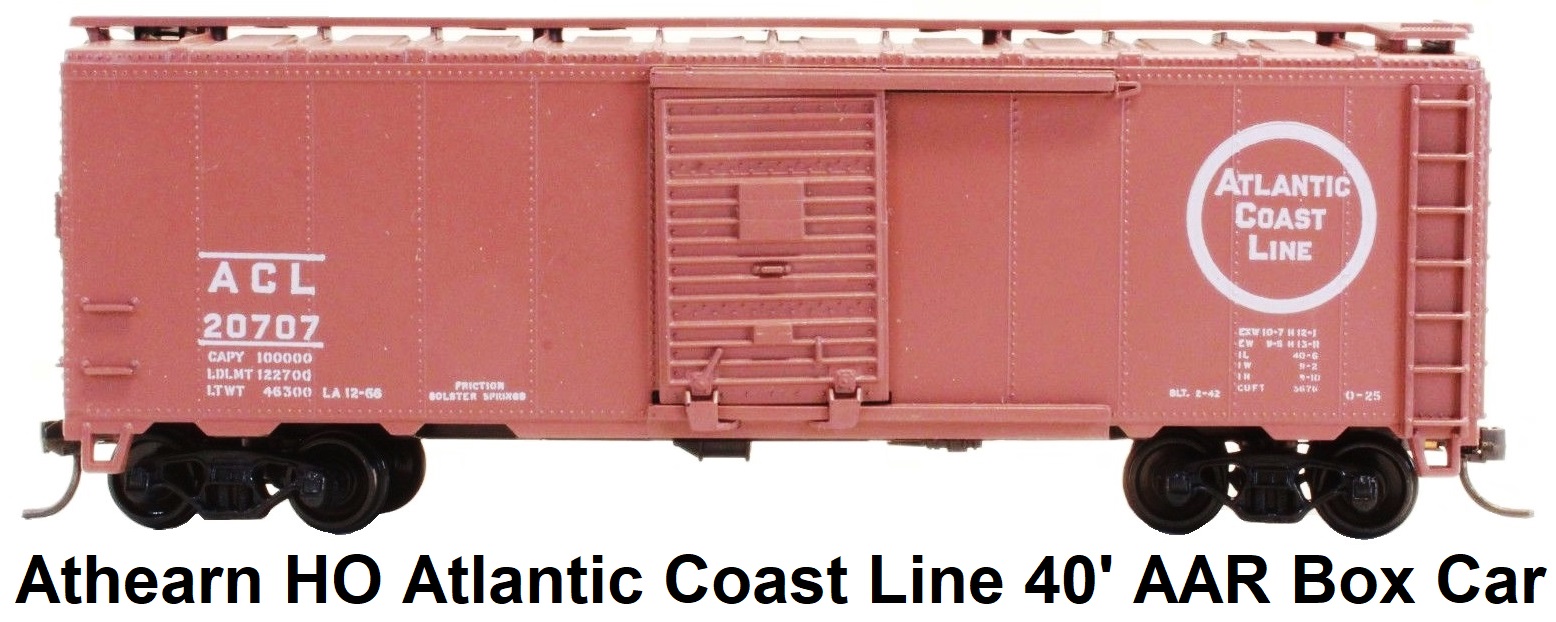
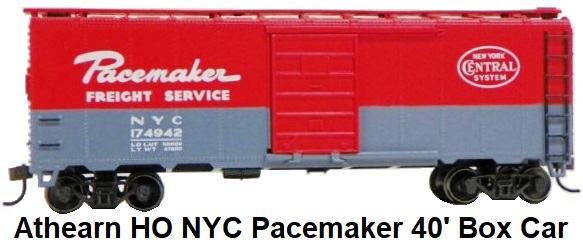

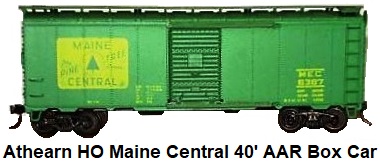
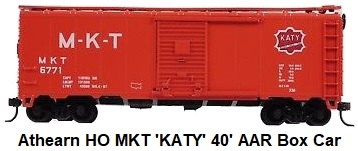
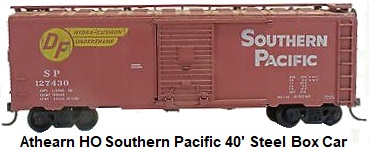
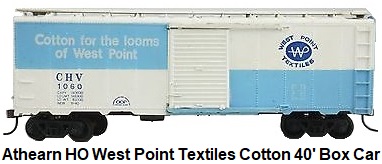
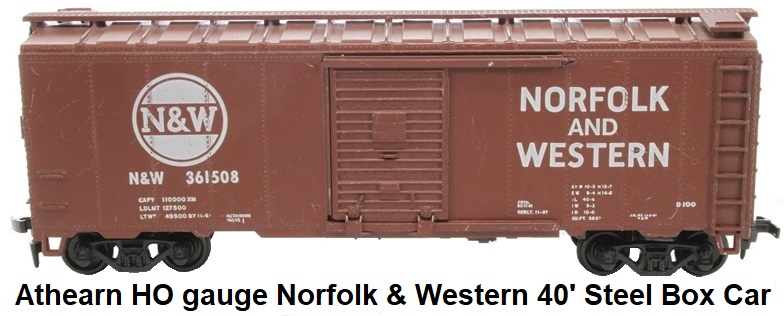
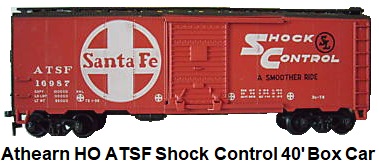
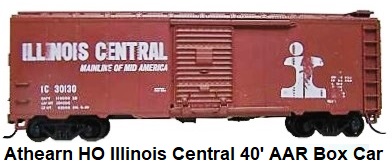
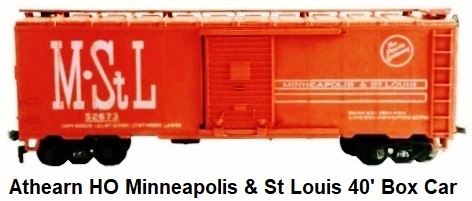
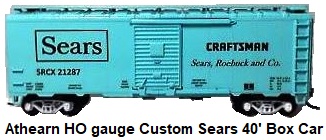
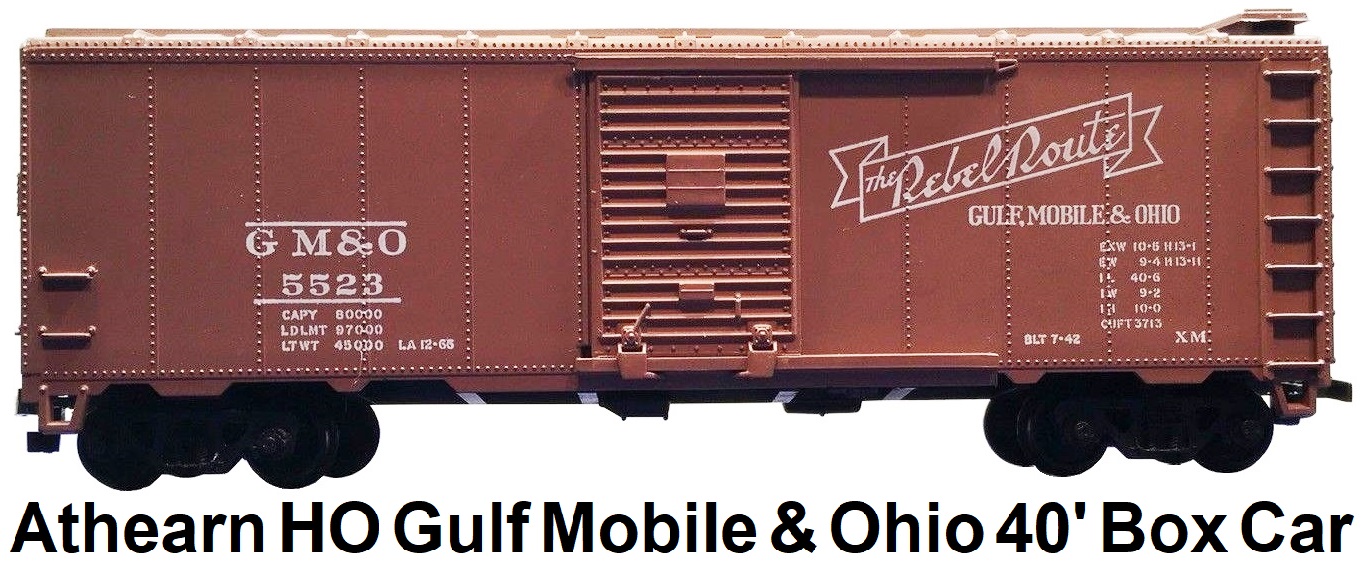
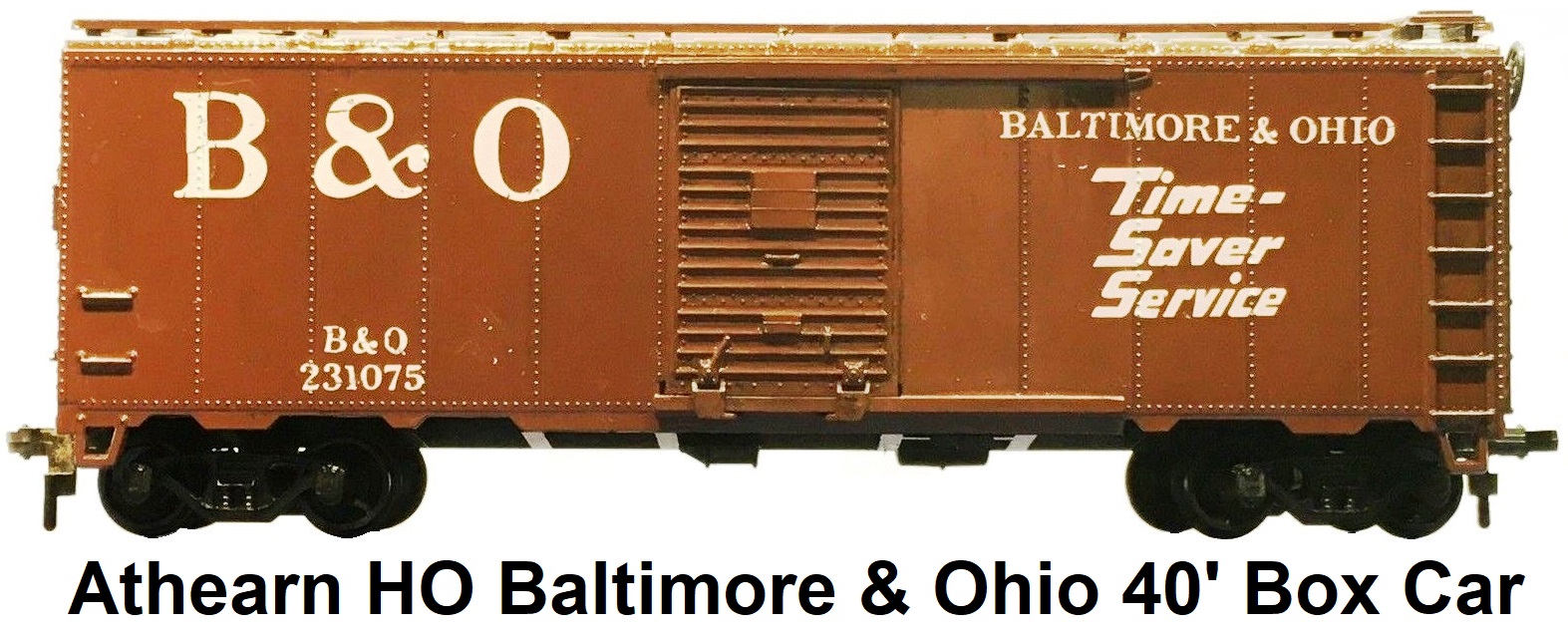
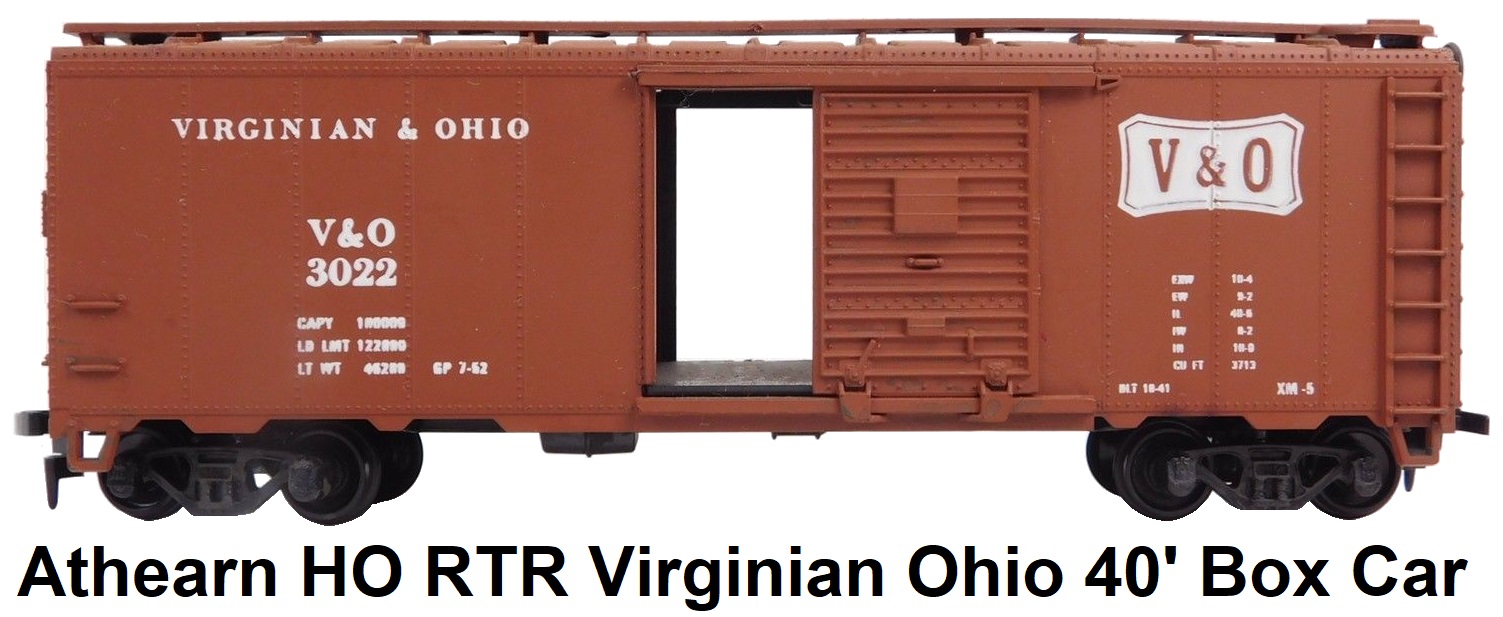
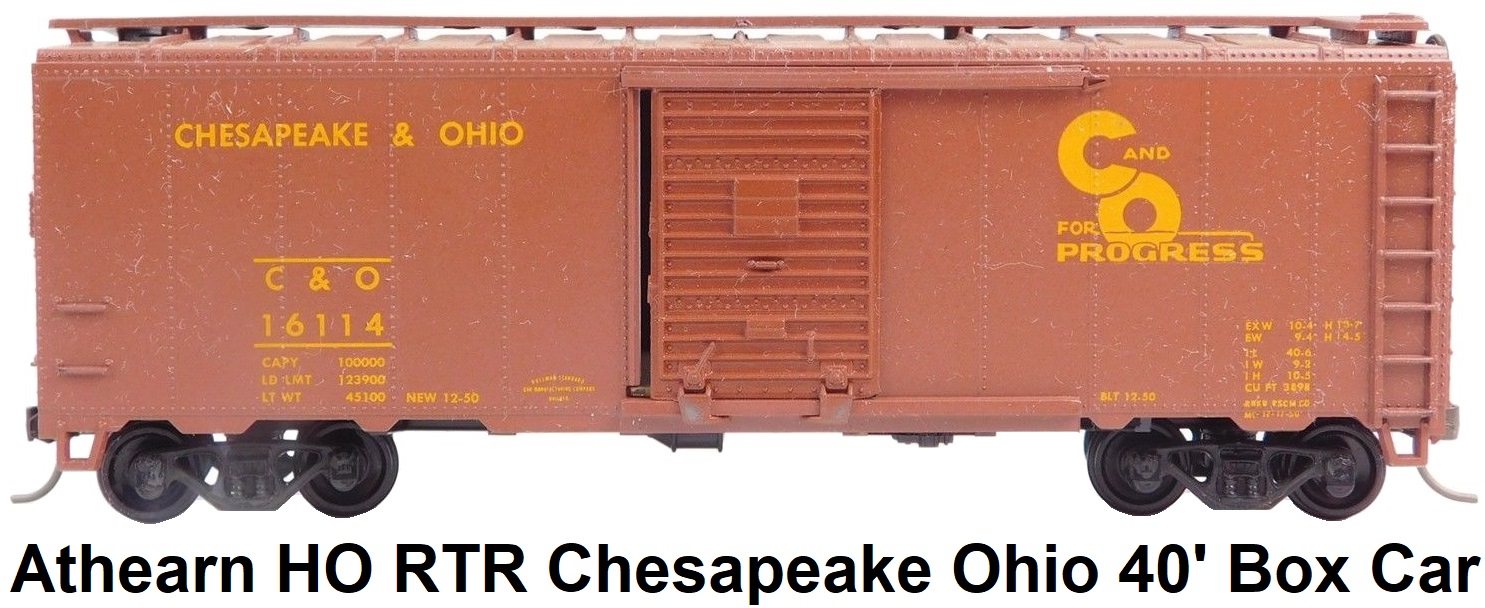
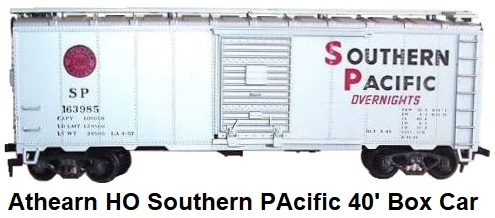
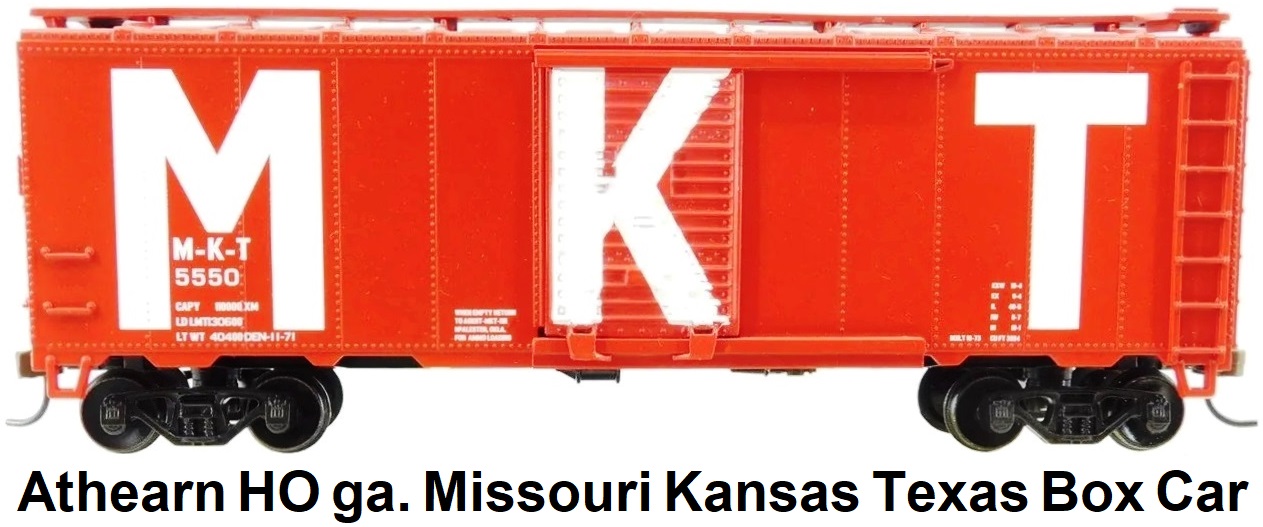

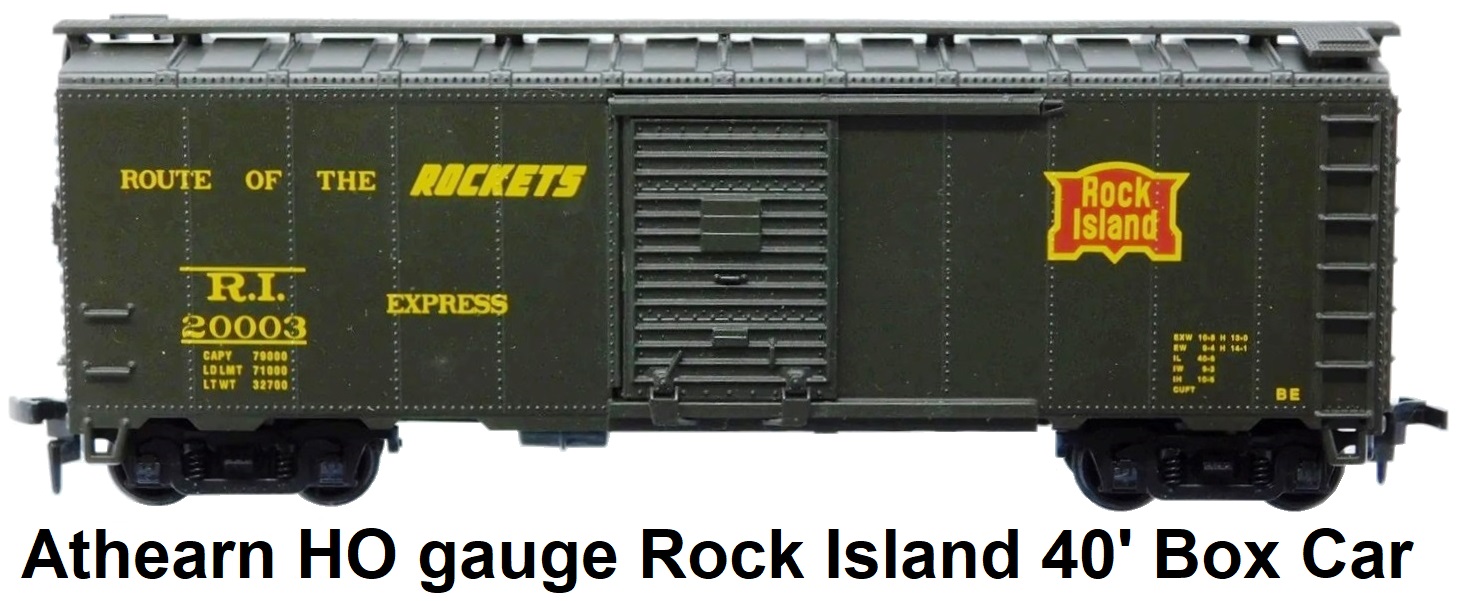
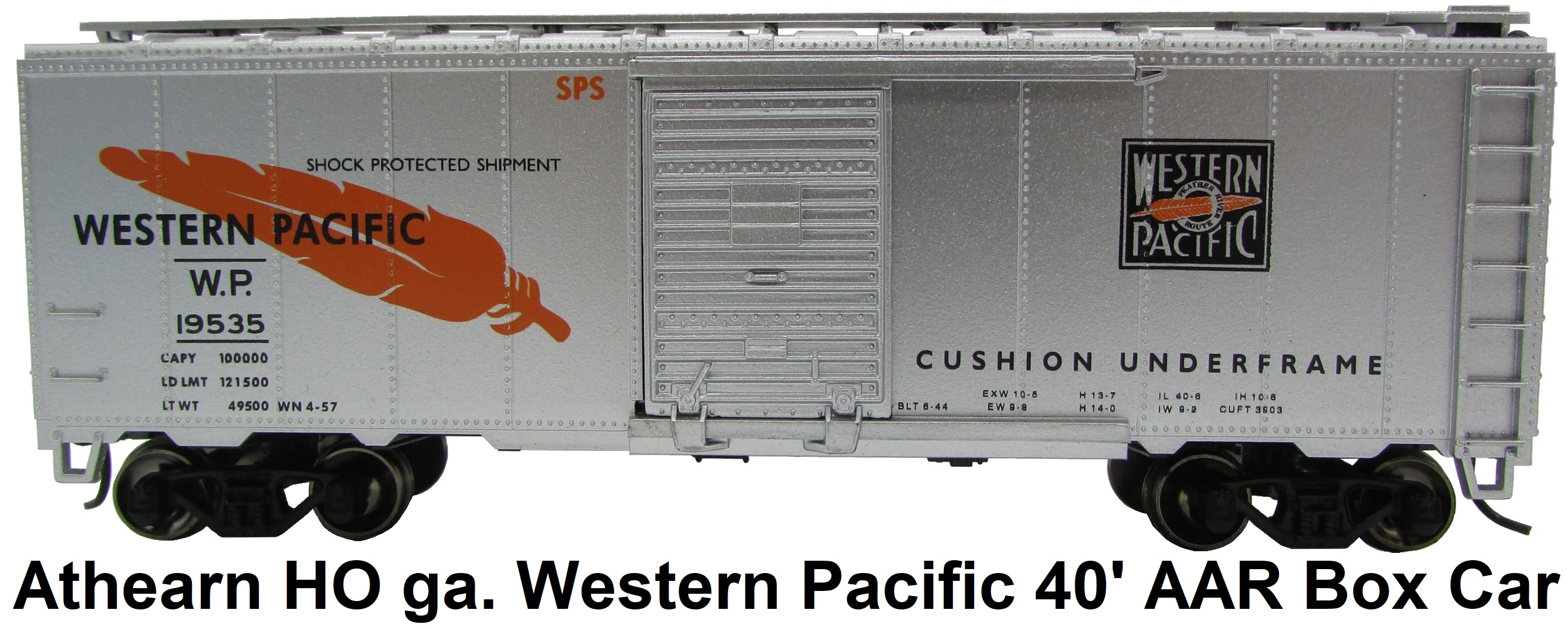
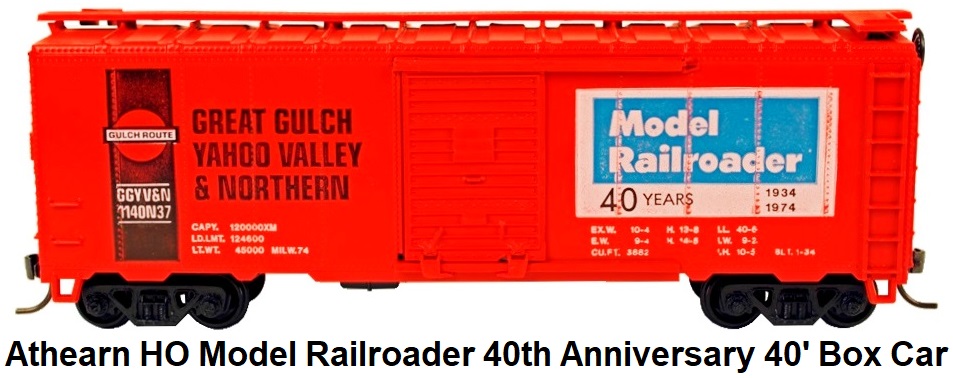

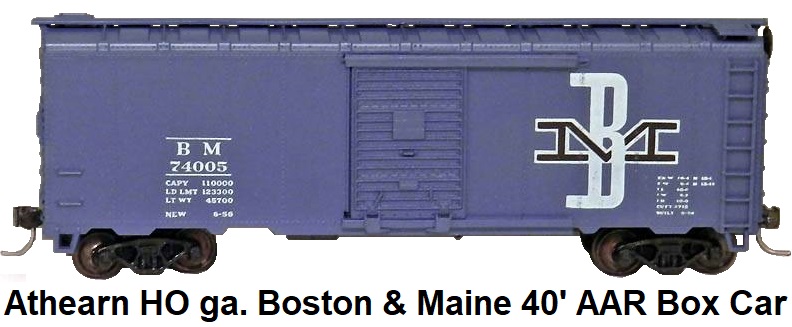
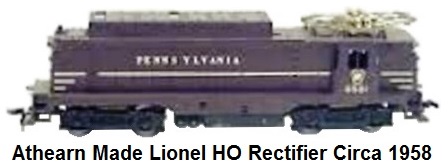 Beginning in 1958 through the early 1960's, Athearn licensed HO gauge trains that it made for
resale by Lionel, which resold them as their own. Custom manufactured items included
a Rectifier Electric and auto loader. All other Athearn made Lionel pieces appeared to be exactly like Athearn's own
trains except for the inclusion of a circled "L" logo being the differentiator. The other locomotives provided
were F7-A's as powered or dummy units, dummy F7-B's, GP-9's, and the 4 wheeled Hustler industrial switcher.
Lightweight Athearn passenger cars and a large assortment of freight cars were offered to round out the rolling
stock assortment. The Rectifier was a unique offering in the Athearn line and was the only electric locomotive
ever sold by Athearn as the company focus was primarily diesel with some steam. Lionel reportedly retained the
molds to the rectifier, which is the only Athearn-tooled HO piece that did not remain in Athearn possession.
Beginning in 1958 through the early 1960's, Athearn licensed HO gauge trains that it made for
resale by Lionel, which resold them as their own. Custom manufactured items included
a Rectifier Electric and auto loader. All other Athearn made Lionel pieces appeared to be exactly like Athearn's own
trains except for the inclusion of a circled "L" logo being the differentiator. The other locomotives provided
were F7-A's as powered or dummy units, dummy F7-B's, GP-9's, and the 4 wheeled Hustler industrial switcher.
Lightweight Athearn passenger cars and a large assortment of freight cars were offered to round out the rolling
stock assortment. The Rectifier was a unique offering in the Athearn line and was the only electric locomotive
ever sold by Athearn as the company focus was primarily diesel with some steam. Lionel reportedly retained the
molds to the rectifier, which is the only Athearn-tooled HO piece that did not remain in Athearn possession.
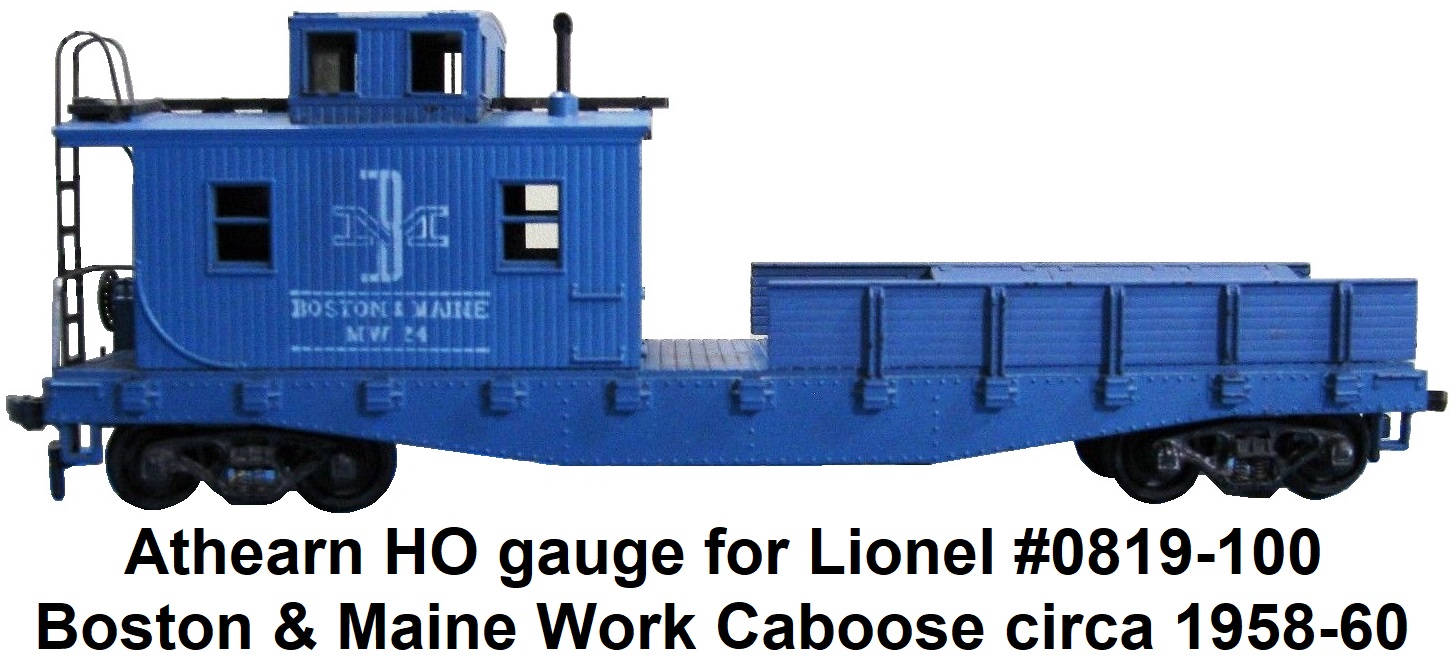 Lionel would produce a drive on its own for powering its Rectifiers. The Athearn models rode
on the GP9 underframe and had EMD Blomberg trucks, a spotting feature for examples found without a box.
Athearn is known only to have cataloged and sold the blue and yellow Virginian Rectifier, while Lionel produced
other road names, including New Haven and Pennsylvania. Interestingly, in 1993 Athearn mistakenly issued an Erie
50' gondola kit in HO that had a rubber stamped Lionel circle L logo on it. This error was caused by use of
original 1958 drawings for production of the car's new rubber stamps. While this was an inexpensive car,
the error makes it quite collectable.
Lionel would produce a drive on its own for powering its Rectifiers. The Athearn models rode
on the GP9 underframe and had EMD Blomberg trucks, a spotting feature for examples found without a box.
Athearn is known only to have cataloged and sold the blue and yellow Virginian Rectifier, while Lionel produced
other road names, including New Haven and Pennsylvania. Interestingly, in 1993 Athearn mistakenly issued an Erie
50' gondola kit in HO that had a rubber stamped Lionel circle L logo on it. This error was caused by use of
original 1958 drawings for production of the car's new rubber stamps. While this was an inexpensive car,
the error makes it quite collectable.

In 1958 Athearn introduced the plastic-bodied RDC-1 and RDC-3 in New Haven or Santa Fe road names, fully assembled for
$7.95, and powered by the Hi-F Drive. Athearn also offered assembled non-powered RDC models in the same two road names and
two body styles for $2.95 each. A plastic version of the 200-Ton Crane was also offered for the first time that year.

1959 saw release of the 4-6-2 Pacific steam locomotive with the Hi-F Drive, as well
as the 50' Double Door Box Car, Quad Hopper and Pickle Cars. Athearn Heavyweight Passenger Cars were new in the fall of
1960. The first road names were B&O and Santa Fe, plus they were available as undecorated, in both kit and R-T-R form.
Athearn sold some of its GP7 shells to Penn Line that were paired with their own power
chassis to create the Penn Line GP9's. By 1961 Athearn had introduced a gear-drive version of its 4-6-2 and a
gear-driven 0-4-2T 'Little Monster' and 0-6-0. The 4-6-2 was a model of the Boston & Maine P4 class Pacific
steam locomotive. It incorporated a cast zinc alloy base and thermoplastic resin superstructure. It had a worm
drive and all power pickup was through the bipolar trucks that carried the tender. The 4-6-2 Pacific was planned
to be part of the Lionel HO line, but difficulties in production kept it from joining
that catalog. This item was discontinued after the Wilson motor was no longer available, and was not redesigned for a more
technologically advanced motor. After a short run, in 1965 the 0-6-0 and 0-4-2T were also discontinued and no steam
locomotives were produced by Athearn for almost 4 decades.

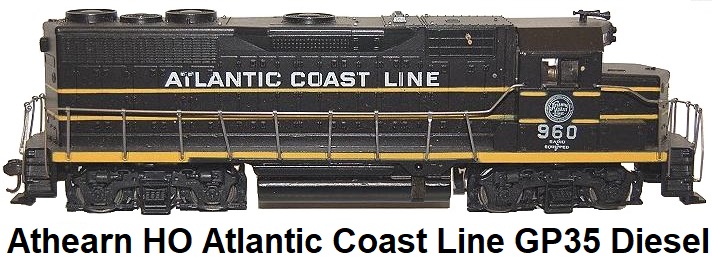

In 1962 Athearn introduced their GP30 diesel. It was offered
Ready-to-Run for $10.95 or in kit form for $8.95. It featured a geared, 8-wheel drive. The ring magnet motor for
diesels came out in 1964. This led to the release of the GP35, SD45, SDP40, DD40 and SW1500 Cow & Calf in 1966.


The Athearn EMD F7 diesels were switched from the Hi-F rubber band drive to a new standard gear drive in
1964. The Globe-tooled A-unit plastic shell was modified at this time as well, now adorned with a twin headlight and cast
numberboards on its nose.

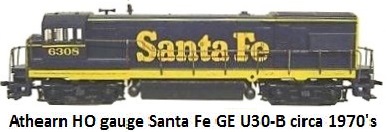 Alco PA1 and PB1 models were introduced in 1970, and a year later U28B, U28C,
U30B, U30C, U33B and U33C diesels were released. In the 1970's Cox trains complete
line of HO products consisted almost entirely of Athearn produced items, including F-7A and B diesels, GP-35
diesels, SW-1500 diesels, U28-C diesels, PA-1 and Hustler locomotives. Rolling stock produced by Athearn
for Cox included the 40' box car, 50' plug door Box car, 40' reefer, 40' hopper, 40' cattle car
3-dome tank car, 62' tank car, single-dome tank car, 50' gondolas, cupola and bay window cabooses, 50' auto
box car and Athearn's streamline passenger cars. Cox also marketed several Athearn accessories as their own.
Alco PA1 and PB1 models were introduced in 1970, and a year later U28B, U28C,
U30B, U30C, U33B and U33C diesels were released. In the 1970's Cox trains complete
line of HO products consisted almost entirely of Athearn produced items, including F-7A and B diesels, GP-35
diesels, SW-1500 diesels, U28-C diesels, PA-1 and Hustler locomotives. Rolling stock produced by Athearn
for Cox included the 40' box car, 50' plug door Box car, 40' reefer, 40' hopper, 40' cattle car
3-dome tank car, 62' tank car, single-dome tank car, 50' gondolas, cupola and bay window cabooses, 50' auto
box car and Athearn's streamline passenger cars. Cox also marketed several Athearn accessories as their own.

 In 1973 Athearn introduced its HO gauge Electro Motive F45 and FP45 diesel locomotive models,
which were among the first model locomotives to include flywheels on the motor shaft. The gears were connected to the
flywheels on the motor via a diagonal worm gear and male/female universals. Later Athearn drives featured a single dog bone
universal instead of male/female parts to reduce friction points, but many of the old drives continue to function with proper
maintenance and attention. These diesels were sold as powered ($17.98) and unpowered dummy units ($6.98).
In 1973 Athearn introduced its HO gauge Electro Motive F45 and FP45 diesel locomotive models,
which were among the first model locomotives to include flywheels on the motor shaft. The gears were connected to the
flywheels on the motor via a diagonal worm gear and male/female universals. Later Athearn drives featured a single dog bone
universal instead of male/female parts to reduce friction points, but many of the old drives continue to function with proper
maintenance and attention. These diesels were sold as powered ($17.98) and unpowered dummy units ($6.98).
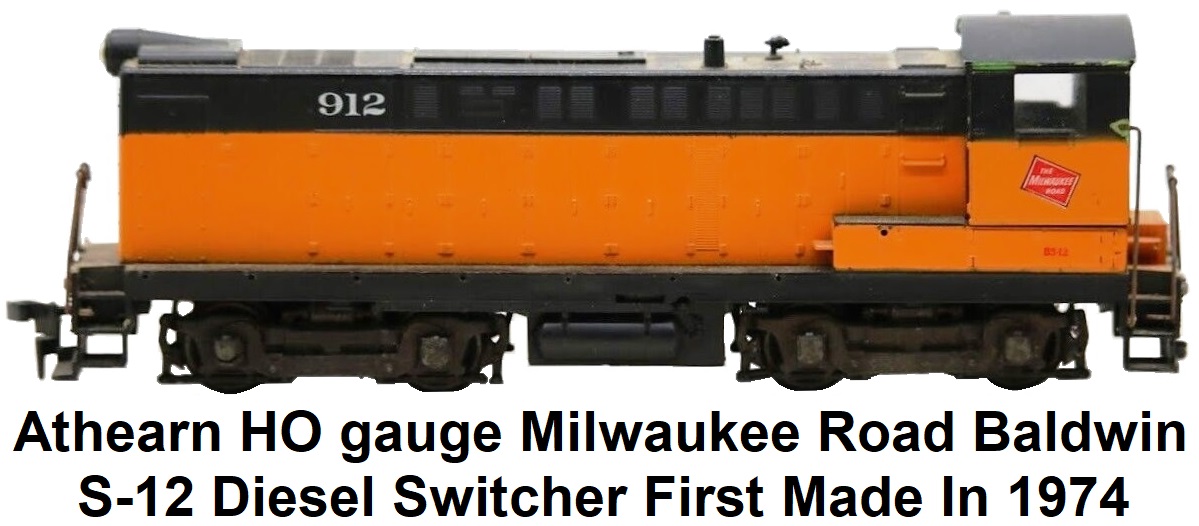 Athearn's HO model of the Baldwin S-12 diesel switcher was released in mid-1974. This model was also
fitted with the new dual-flywheel equipped drive. A powered kit was offered for $14.98. Athearn supplied freight cars for
Atlas to sell with its Roco-made diesel locomotives in train sets starting in
1975. These sets consisted of EMD diesels made in Austria by Roco that were trend-setters in the marketplace, and Atlas
packaged fully assembled Athearn rolling stock that was standard pieces from the Athearn line.
Athearn's HO model of the Baldwin S-12 diesel switcher was released in mid-1974. This model was also
fitted with the new dual-flywheel equipped drive. A powered kit was offered for $14.98. Athearn supplied freight cars for
Atlas to sell with its Roco-made diesel locomotives in train sets starting in
1975. These sets consisted of EMD diesels made in Austria by Roco that were trend-setters in the marketplace, and Atlas
packaged fully assembled Athearn rolling stock that was standard pieces from the Athearn line.
 In 1980 Athearn released its version of the Fairbanks-Morse Trainmaster. The Athearn
H24-66 Trainmaster was an early example of prototype-specific tooling being offered on ready-to-run plastic models.
In 1984 Athearn improved their locomotive line with a new drive that had new narrower motors and new handrail stanchions.
New plastic EMD Blomberg truck side frames were applied to the F7, GP9 and GP35. Athearn introduced the SD40-2 and SD40T-2
Tunnel Motor. With the new narrow motors, they are Athearn's first hood units to feature scale-width hoods. A GP38-2 and GP50
were late 1980's releases.
In 1980 Athearn released its version of the Fairbanks-Morse Trainmaster. The Athearn
H24-66 Trainmaster was an early example of prototype-specific tooling being offered on ready-to-run plastic models.
In 1984 Athearn improved their locomotive line with a new drive that had new narrower motors and new handrail stanchions.
New plastic EMD Blomberg truck side frames were applied to the F7, GP9 and GP35. Athearn introduced the SD40-2 and SD40T-2
Tunnel Motor. With the new narrow motors, they are Athearn's first hood units to feature scale-width hoods. A GP38-2 and GP50
were late 1980's releases.
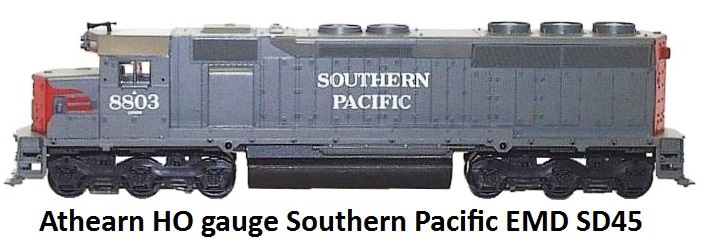 Irv Athearn passed away in 1991 in Hawthorne, CA. The company passed on to Bob Macias, one of the head employees at Athearn
and the manufacturing genius behind the majority of products in the vast Athearn line who became president. New owner
Mike Geddes took control as Chairman in 1994, but continued to follow Athearn's commitment to high-quality products
at reasonable prices. Additions to the line included the Genesis line of premium models,
the licensing of John Deere kits and tractors, the acquisition of Rail Power Products, Inc., the entry into
the N-scale market and the development of the Ready-to-Roll line. The 1990's also saw the introduction of the
50' Modern Double-Door Box Car, the MAXI-III and Husky-Stack Well Cars, the GP60, GP50 Phase II, the AC4400CW,
AMD-103, Bombardier Bi-Level Commuter Cars and C44-9W. In July of 1998 Athearn purchased the F-Unit molds and
tooling by Paul Lubliner from Highliners to be used to produce decorated F2A&B, F3A&B, F7A&B, and F9A&B diesel
locomotives as part of the Genesis line. Highliners retained the exclusive rights to sell the F-Units in
undecorated kit form. The announcment was made by then President Bob Macias and Vice-president Tim Geddes.
Irv Athearn passed away in 1991 in Hawthorne, CA. The company passed on to Bob Macias, one of the head employees at Athearn
and the manufacturing genius behind the majority of products in the vast Athearn line who became president. New owner
Mike Geddes took control as Chairman in 1994, but continued to follow Athearn's commitment to high-quality products
at reasonable prices. Additions to the line included the Genesis line of premium models,
the licensing of John Deere kits and tractors, the acquisition of Rail Power Products, Inc., the entry into
the N-scale market and the development of the Ready-to-Roll line. The 1990's also saw the introduction of the
50' Modern Double-Door Box Car, the MAXI-III and Husky-Stack Well Cars, the GP60, GP50 Phase II, the AC4400CW,
AMD-103, Bombardier Bi-Level Commuter Cars and C44-9W. In July of 1998 Athearn purchased the F-Unit molds and
tooling by Paul Lubliner from Highliners to be used to produce decorated F2A&B, F3A&B, F7A&B, and F9A&B diesel
locomotives as part of the Genesis line. Highliners retained the exclusive rights to sell the F-Units in
undecorated kit form. The announcment was made by then President Bob Macias and Vice-president Tim Geddes.
 The line continued to evolve and constant improvements were being made. To increase detail, a narrower Pittman motor
was designed to fit narrower and correct-width locomotive hoods. Notches in locomotive pilots for couplers were enclosed
to match the prototypes. In the final blue box decade, the radiator fans and grilles were given a 'see-through' appearance
with improved molding techniques. Many characteristics of the blue box line including re-worked mold tooling even survives
today as part of Athearn's line of Ready-to-Run trains.
In 1999 Athearn entered the steam locomotive market with the Genesis Series USRA 2-8-2 Mikado and 4-6-2 Pacific.
The models were manufactured overseas by Samhongsa. At the time, this was the first new steam locomotive offering
in almost 40 years. The other companies offering steam locomotives at this time were Rivarossi,
Model Die Casting/Roundhouse, Tyco/Mantua, and Bowser. However, those
models were still being produced using decades old technology. The Athearn Genesis models included can motors,
flywheels, improved (non-tender) electrical pickup, very quiet operation, DCC-ready wiring and moderate detail.
The line continued to evolve and constant improvements were being made. To increase detail, a narrower Pittman motor
was designed to fit narrower and correct-width locomotive hoods. Notches in locomotive pilots for couplers were enclosed
to match the prototypes. In the final blue box decade, the radiator fans and grilles were given a 'see-through' appearance
with improved molding techniques. Many characteristics of the blue box line including re-worked mold tooling even survives
today as part of Athearn's line of Ready-to-Run trains.
In 1999 Athearn entered the steam locomotive market with the Genesis Series USRA 2-8-2 Mikado and 4-6-2 Pacific.
The models were manufactured overseas by Samhongsa. At the time, this was the first new steam locomotive offering
in almost 40 years. The other companies offering steam locomotives at this time were Rivarossi,
Model Die Casting/Roundhouse, Tyco/Mantua, and Bowser. However, those
models were still being produced using decades old technology. The Athearn Genesis models included can motors,
flywheels, improved (non-tender) electrical pickup, very quiet operation, DCC-ready wiring and moderate detail.


In 2002 Athearn acquired the molds, dies and inventory of Rail Power Products of Park City, UT.
The purchase was announced by then Athearn President Tim Geddes. Rail Power had been in business for 15 years and was
initially formed to use Athearn's mechanicals while providing highly detailed locomotive bodies and models that others,
including Athearn, were not making. There were 15 locomotive body styles available from Rail Power for Athearn to
further update and enhance its Ready-to-Roll brand of HO locomotives. Athearn would also produce the former Rail
Power Products models of Intermodal equipment in 1/87 scale. This included the Rail Power Products developed
over-the-road trailers, containers and a 56-foot intermodal well car. The same year Athearn purchased the rights
and the tooling for four 50' Box Cars from Details West of Chino, CA. The boxcars were a 50-foot single plug door,
50-foot smooth side single plug door, 50-foot plug door/sliding door, and 52-foot double plug door.
These cars were later released in the Athearn Ready-to-Roll line. The deal with Details West included its
inventory, plus tooling and molds. Details West, however, would retain the rights and continue to sell the floor
and underframe for these models.
Athearn HO 50' Automobile Cars
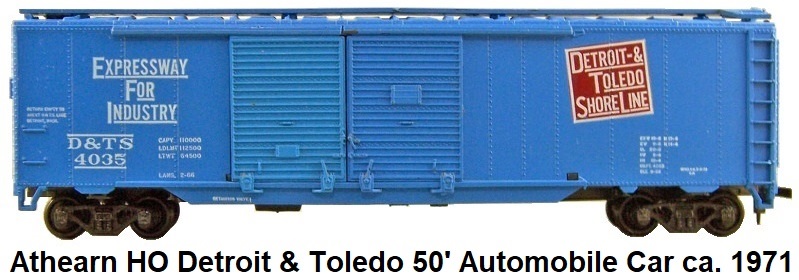
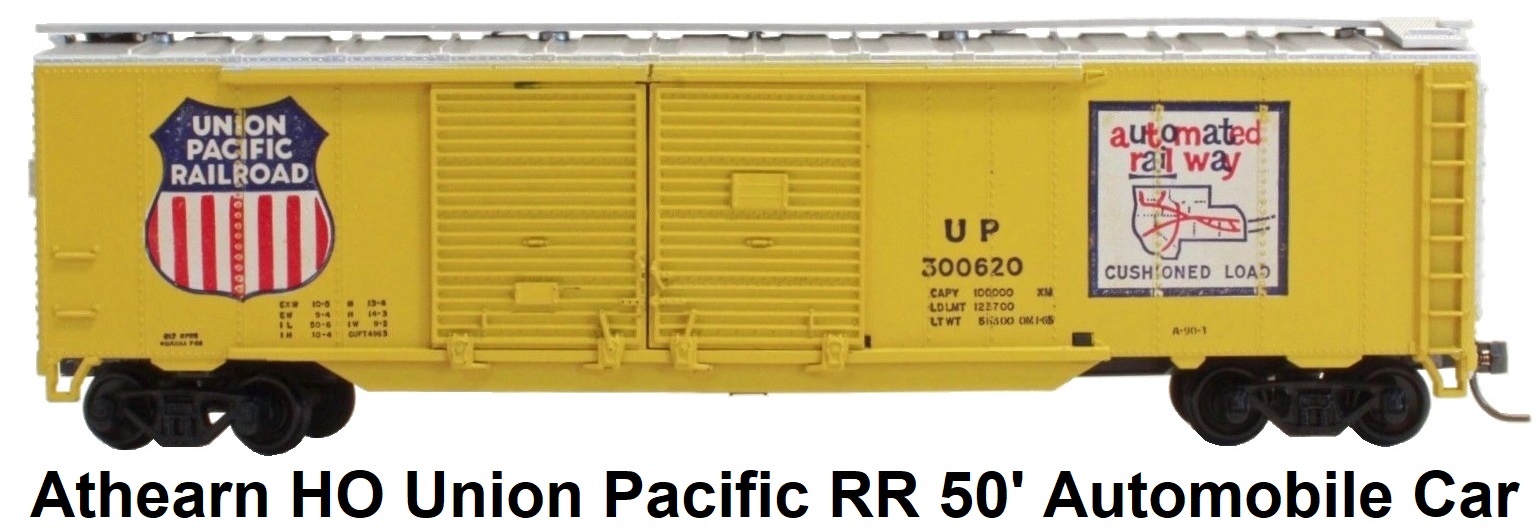
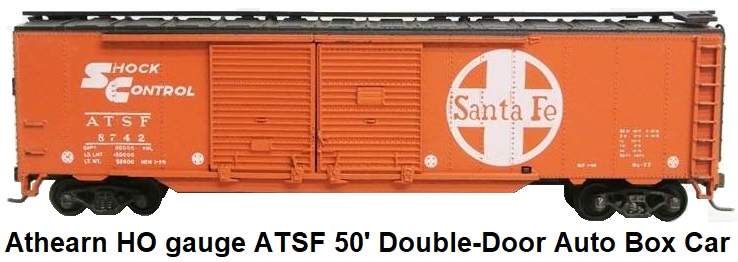
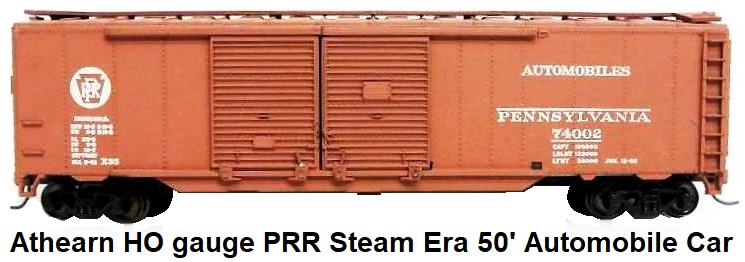
Athearn HO 50' ACF Box Cars
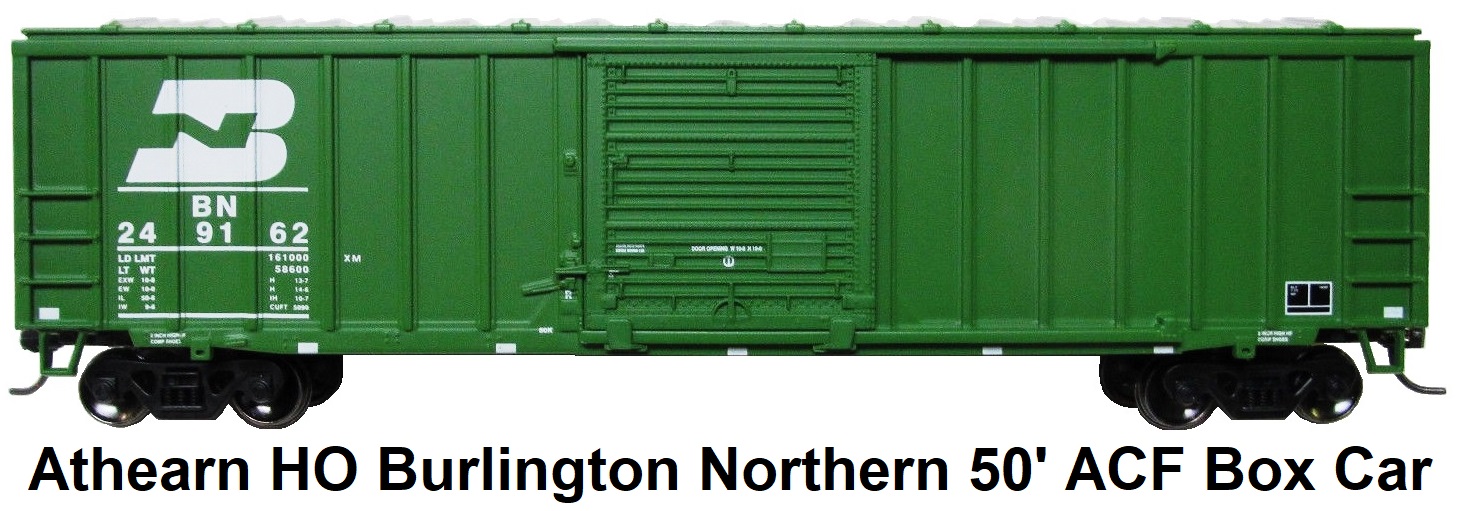

Athearn Genesis Ready To Run HO 50' Plug Door Box Cars
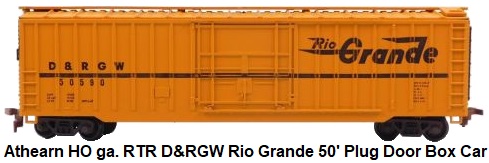
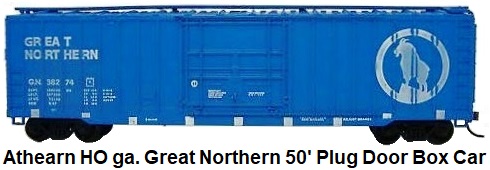
Athearn Roundhouse Ready To Run HO 50' Steel Box Cars

 The 21st Century brought on some significant changes and milestone events at Athearn. They introduced their N scale line in
2002. Irv Athearn was inducted into the 'O' Scale Hall of Fame in 2002 in Chicago. In 2003 Athearn released their first
locomotive equipped with sounds. And the biggest change occurred when Athearn was bought in 2004 by Horizon Hobby Inc. who
became the exclusive distributor of all the Athearn products. Athearn was then moved from its 58,000 foot manufacturing
facility in Compton to a new facility in Carson, California. Around this time, Athearn had 50 employees and was making more
than 2,000 model railroad products. Horizon Hobby was originally founded in 1985 by Rick Stephens, an American businessman.
The company was widely known for making various hobby-grade radio-controlled (RC) models.
The 21st Century brought on some significant changes and milestone events at Athearn. They introduced their N scale line in
2002. Irv Athearn was inducted into the 'O' Scale Hall of Fame in 2002 in Chicago. In 2003 Athearn released their first
locomotive equipped with sounds. And the biggest change occurred when Athearn was bought in 2004 by Horizon Hobby Inc. who
became the exclusive distributor of all the Athearn products. Athearn was then moved from its 58,000 foot manufacturing
facility in Compton to a new facility in Carson, California. Around this time, Athearn had 50 employees and was making more
than 2,000 model railroad products. Horizon Hobby was originally founded in 1985 by Rick Stephens, an American businessman.
The company was widely known for making various hobby-grade radio-controlled (RC) models.


Under Horizon, Athearn then purchased Model Die Casting of Carson City, NV and their
line of Roundhouse brand trains, launched 1:50-scale precision die-cast products, and created the 4-6-6-4 Challenger
with sound as well as other exciting new models, including a Union Pacific Big Boy 4-8-8-4 (released 2006), a
Union Pacific class FEF 4-8-4 (released 2007), and a Southern Pacific class MT-4 4-8-2 Mountain with Vanderbilt
type tender (released 2010). In 2006, Horizon purchased McHenry Couplers. Michael Stephens was named as the new
president of Athearn Trains in January 2007. His father was Rick Stephens, who served as Chairman
of Horizon Hobby when the Athearn acquisition was made in 2004. The announcement was made by Joe Ambrose,
Vice-president of Horizon Hobby, Inc., Distribution Division. Before joining Athearn, Michael Stephens was vice president
of marketing for Kalmbach Publishing Co. While at Kalmbach, he was co-chair of the World's Greatest Hobby
campaign. It was announced that former Athearn president Tim Geddes would continue to work with the firm as a
consultant. Tim had served as president since 1995. In 2008, Athearn acquired the tooling for the short-lived
"Tower 55" series of HO scale diesels from Overland Models. Much of this tooling made its way into the Athearn
Genesis line.
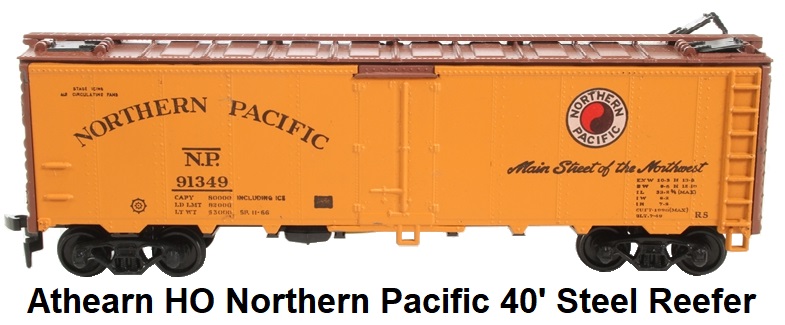
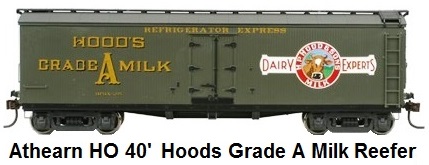
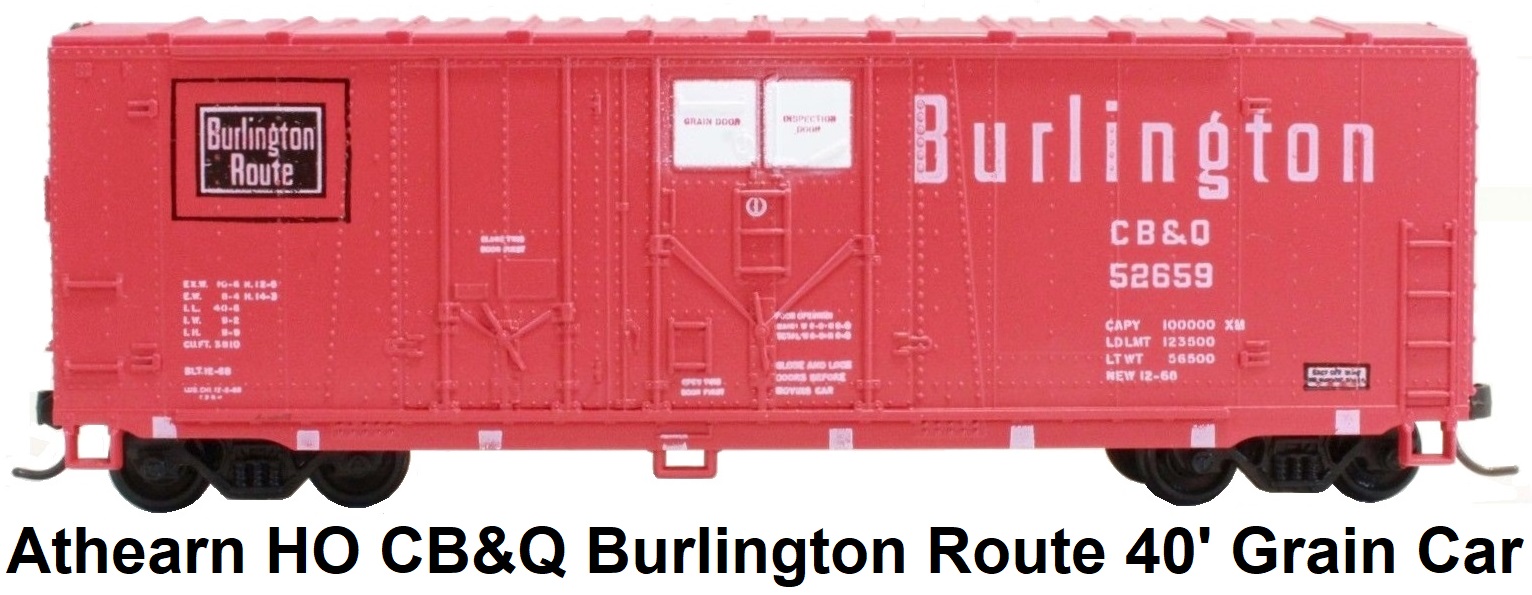
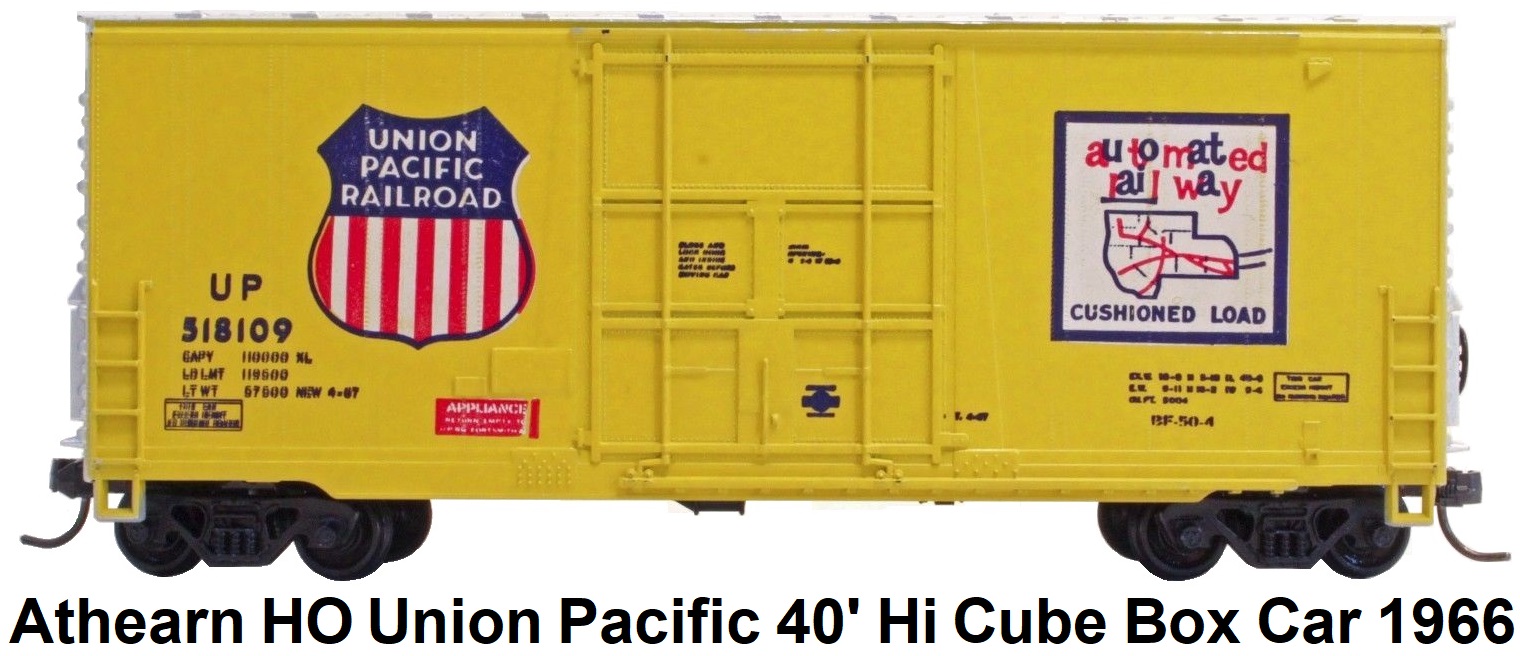
 The firm of Model Die Casting, acquired by Athearn in June of 2004, has its roots in model train production
dating back to 1938, when musicians Jerry Joice and Perry Bodkin established a hobby store called Roundhouse at
1301 North Catalina Street in Hollywood, California. The first train kits produced were HO scale and were made
of die cast metal parts. In 1939 the business was purchased by part-time employees Clarence H. Menteer and
C.A. Voelckel. Shortly after assuming leadership, they were hired to build models for Cecil B. DeMille's
film Union Pacific. In 1939 Roundhouse Products introduced an HO scale 0-6-0 steam locomotive as a
brass and lead alloy kit. Like most other manufacturers, World War II forced Roundhouse to suspend
operations. By 1946 Menteer & Voelckel's company was now called Model Die Casting, Inc. and production
of the Roundhouse Products line was resumed. In 1948 Model Die Casting relocated to Los Angeles, California.
In 1950, they released the first four cars in their cast metal car kit line. These were steel sheathed box cars
with pre-painted and lettered sides using 410-M paints. In 1955 the company relocated to Hawthorne, CA. In
1956 C.H. Menteer became the sole owner of Model Die Casting, Inc. and served as its president for the next
50 years. MDC/Roundhouse made various freight cars and steam engines in Zamac prior to 1960. Their first
plastic models were the ore car kits of 1960. In 1979 the company introduced their N Scale product line.
In 1984 Model Die Casting introduced their 2-truck Shay steam locomotive kit. And in 1985 they released their
Alco RS3 diesel locomotive kit, which hobbyists believed to be the most accurate RS3 ever made.
In 1993 Model Die Casting relocated operations to 5070 Sigstrom Drive in Carson City, Nevada. In 1996
new can motors were introduced. The Roundhouse 30' Wood Caboose kits became very popular with modelers.
Finally in 2004 the acquisition by Athearn was made. Roundhouse was known for putting out kits with themes,
such as the 'Old West', 'Old Timer Mining', 'Mountain Logging' and 'Snow Battling'. After the acquisition,
the Roundhouse name was to be used only for a line of HO scale Pre-WW2 products, with the rest of the Roundhouse
line moving under the Athearn name.
The firm of Model Die Casting, acquired by Athearn in June of 2004, has its roots in model train production
dating back to 1938, when musicians Jerry Joice and Perry Bodkin established a hobby store called Roundhouse at
1301 North Catalina Street in Hollywood, California. The first train kits produced were HO scale and were made
of die cast metal parts. In 1939 the business was purchased by part-time employees Clarence H. Menteer and
C.A. Voelckel. Shortly after assuming leadership, they were hired to build models for Cecil B. DeMille's
film Union Pacific. In 1939 Roundhouse Products introduced an HO scale 0-6-0 steam locomotive as a
brass and lead alloy kit. Like most other manufacturers, World War II forced Roundhouse to suspend
operations. By 1946 Menteer & Voelckel's company was now called Model Die Casting, Inc. and production
of the Roundhouse Products line was resumed. In 1948 Model Die Casting relocated to Los Angeles, California.
In 1950, they released the first four cars in their cast metal car kit line. These were steel sheathed box cars
with pre-painted and lettered sides using 410-M paints. In 1955 the company relocated to Hawthorne, CA. In
1956 C.H. Menteer became the sole owner of Model Die Casting, Inc. and served as its president for the next
50 years. MDC/Roundhouse made various freight cars and steam engines in Zamac prior to 1960. Their first
plastic models were the ore car kits of 1960. In 1979 the company introduced their N Scale product line.
In 1984 Model Die Casting introduced their 2-truck Shay steam locomotive kit. And in 1985 they released their
Alco RS3 diesel locomotive kit, which hobbyists believed to be the most accurate RS3 ever made.
In 1993 Model Die Casting relocated operations to 5070 Sigstrom Drive in Carson City, Nevada. In 1996
new can motors were introduced. The Roundhouse 30' Wood Caboose kits became very popular with modelers.
Finally in 2004 the acquisition by Athearn was made. Roundhouse was known for putting out kits with themes,
such as the 'Old West', 'Old Timer Mining', 'Mountain Logging' and 'Snow Battling'. After the acquisition,
the Roundhouse name was to be used only for a line of HO scale Pre-WW2 products, with the rest of the Roundhouse
line moving under the Athearn name.

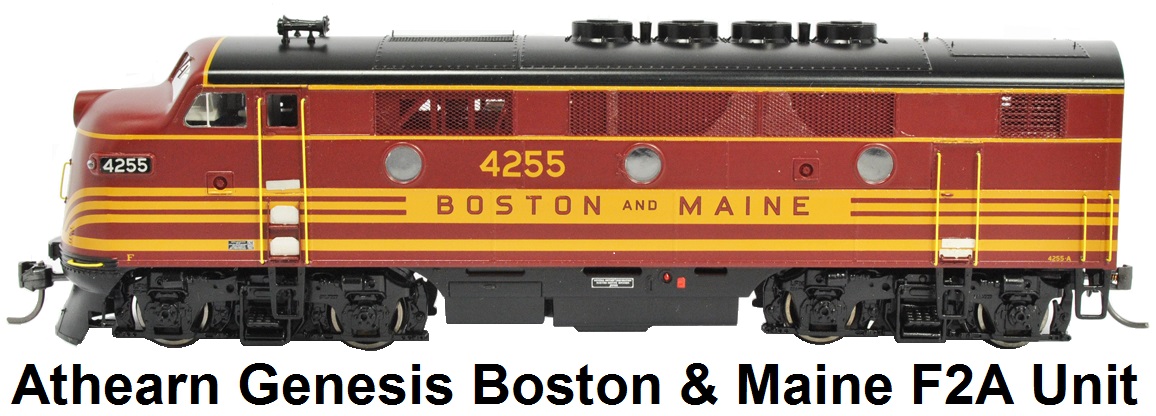
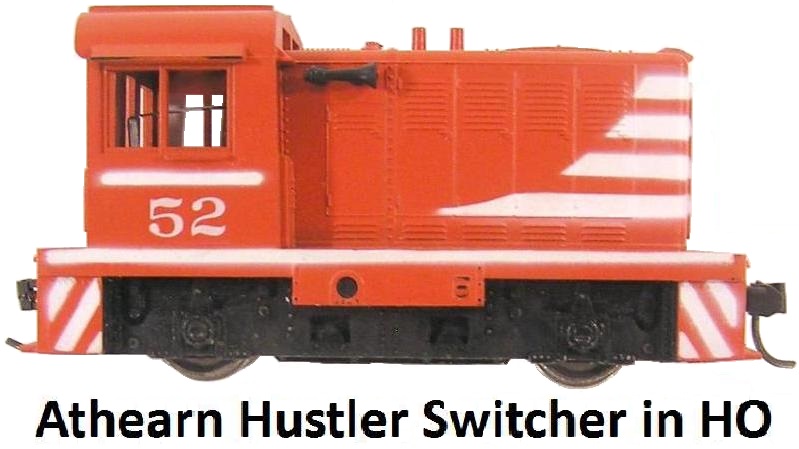 In mid-2009, all remaining U.S. production of Athearn branded products was moved to China and warehousing was moved to parent
company Horizon Hobby.
Sales and product development was moved to a smaller facility in Long Beach, California. The company also
announced on October 16, 2009 that Athearn would stop making its famous 'blue-box kits' because of increased
manufacturing and labor costs. The company decided to concentrate on making fully assembled products.
The company established three lines of products. The Genesis line would be the highest-cost, highest-quality,
with DCC sound and fine details. Two lower-priced, less-detailed lines would consist of the Ready-to-Roll introduced
in 2001, representing trains from the steam-to-diesel transition period to today, and the Roundhouse line,
representing trains from the days of steam era railroading. 2009 was also the year that Athearn
established its relationship with SoundTraxx to begin offering locomotives equipped with Tsunami sound.
In 2010 Michael Stephens left the company and took a position at Walthers as
Vice-President of Proprietary Products.
In mid-2009, all remaining U.S. production of Athearn branded products was moved to China and warehousing was moved to parent
company Horizon Hobby.
Sales and product development was moved to a smaller facility in Long Beach, California. The company also
announced on October 16, 2009 that Athearn would stop making its famous 'blue-box kits' because of increased
manufacturing and labor costs. The company decided to concentrate on making fully assembled products.
The company established three lines of products. The Genesis line would be the highest-cost, highest-quality,
with DCC sound and fine details. Two lower-priced, less-detailed lines would consist of the Ready-to-Roll introduced
in 2001, representing trains from the steam-to-diesel transition period to today, and the Roundhouse line,
representing trains from the days of steam era railroading. 2009 was also the year that Athearn
established its relationship with SoundTraxx to begin offering locomotives equipped with Tsunami sound.
In 2010 Michael Stephens left the company and took a position at Walthers as
Vice-President of Proprietary Products.

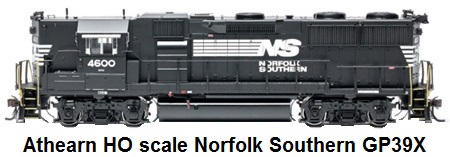 In 2014 Athearn released an Electro-Motive Division GP39X diesel unique to the Southern Ry. for the first
time in plastic. It was available in HO scale equipped with a SoundTraxx Tsunami Digital Command Control
(DCC) sound decoder and a motor with two brass flywheels. This model was an accurate depiction of the
2,600-hp prototype locomotives first introduced in 1980. In 2017 Athearn introduced its 4-6-6-4 Challenger
articulated locomotive in HO scale modelled for the first time in plastic. In April of 2019, Athearn announced an HO Scale
Phase II model of EMD's massive 6,000 HP 6-axle SD90MAC-H diesel as a Genesis 2.0 model, with all-new tooling in both standard
DC and with Tsunami2 Sound & DCC.
In 2014 Athearn released an Electro-Motive Division GP39X diesel unique to the Southern Ry. for the first
time in plastic. It was available in HO scale equipped with a SoundTraxx Tsunami Digital Command Control
(DCC) sound decoder and a motor with two brass flywheels. This model was an accurate depiction of the
2,600-hp prototype locomotives first introduced in 1980. In 2017 Athearn introduced its 4-6-6-4 Challenger
articulated locomotive in HO scale modelled for the first time in plastic. In April of 2019, Athearn announced an HO Scale
Phase II model of EMD's massive 6,000 HP 6-axle SD90MAC-H diesel as a Genesis 2.0 model, with all-new tooling in both standard
DC and with Tsunami2 Sound & DCC.

In May 2021, the decision was made to close down the Long Beach office as Development was now performed
remotely. By June 2021, all service and spare parts for Athearn products had been shipped to the Horizon main complex in
Champaign, Illinois, with repairs and warranty work all being performed there by July 2021. The development team, sales and
marketing continues to work remotely with all replacement parts and repair requests handled on site in Champaign.
On March 25, 2022, Athearn publicly announced a brand consolidation. The company decided to use the
Athearn, Athearn Genesis, and Athearn Roundhouse names for specific categories of its HO and N scale locomotives, freight
cars, passenger cars, vehicles, and train sets. Along with these new classifications, "new logos, new packaging, and a new
design philosophy were created to improve customer’s expectations of the Athearn brand and to make selling the products
easier.” The Athearn Genesis name was now to be used exclusively for the company’s premium line of models. This covered steam
and diesel locomotives, passenger cars, and freight cars in both N and HO scales. Locomotives in the Athearn Genesis line
would have road-name and road-number specific details, a dual-mode SoundTraxx Tsunami2 sound decoder, and various light and
sound features. Passenger cars in the Athearn Genesis line would include detailed interiors, tinted window glazing as
appropriate, and wire grab irons, among other features. Interior lighting was planned for future releases. Among the features
on HO scale Athearn Genesis freight cars are etched-metal running boards and crossover platforms where applicable and
roller-bearing trucks with rotating bearing caps as appropriate. N scale Athearn Genesis freight cars would have body-mounted
couplers and metal wheelsets that will operate on code 80 and 55 track.
Athearn HO gauge 12,000 Gallon Single Dome Tank Cars
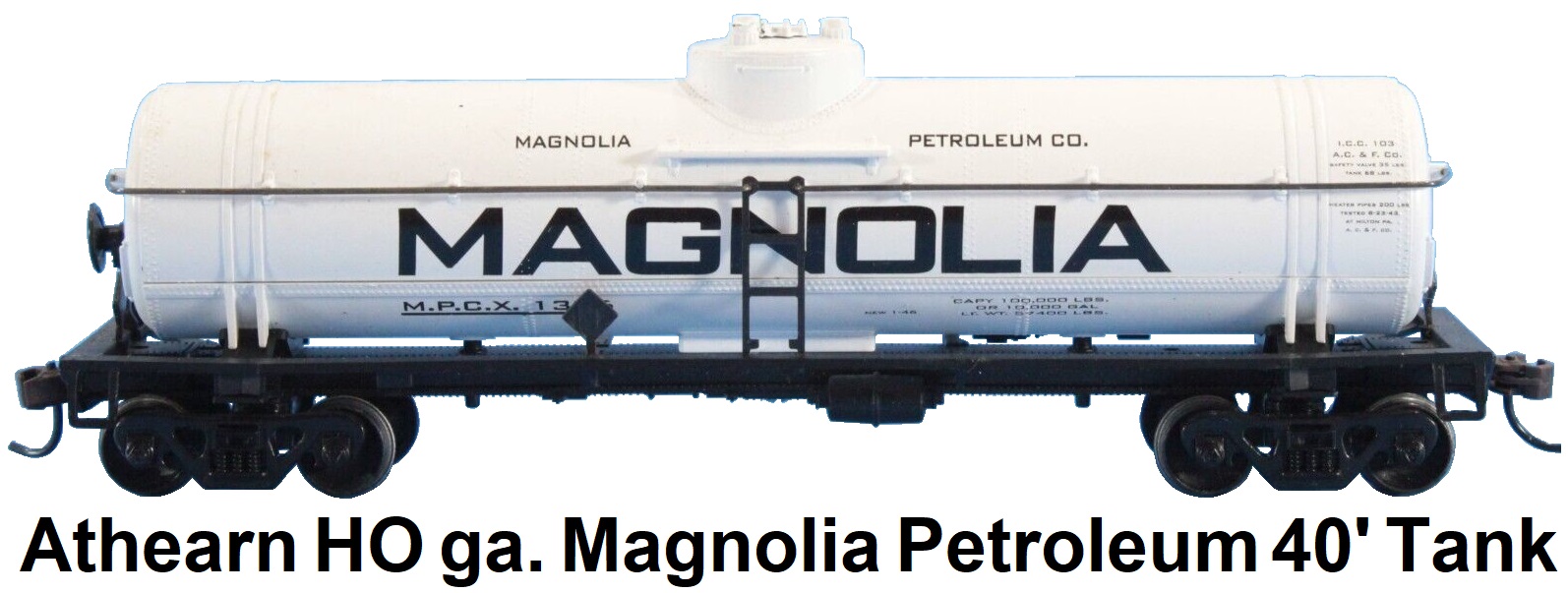
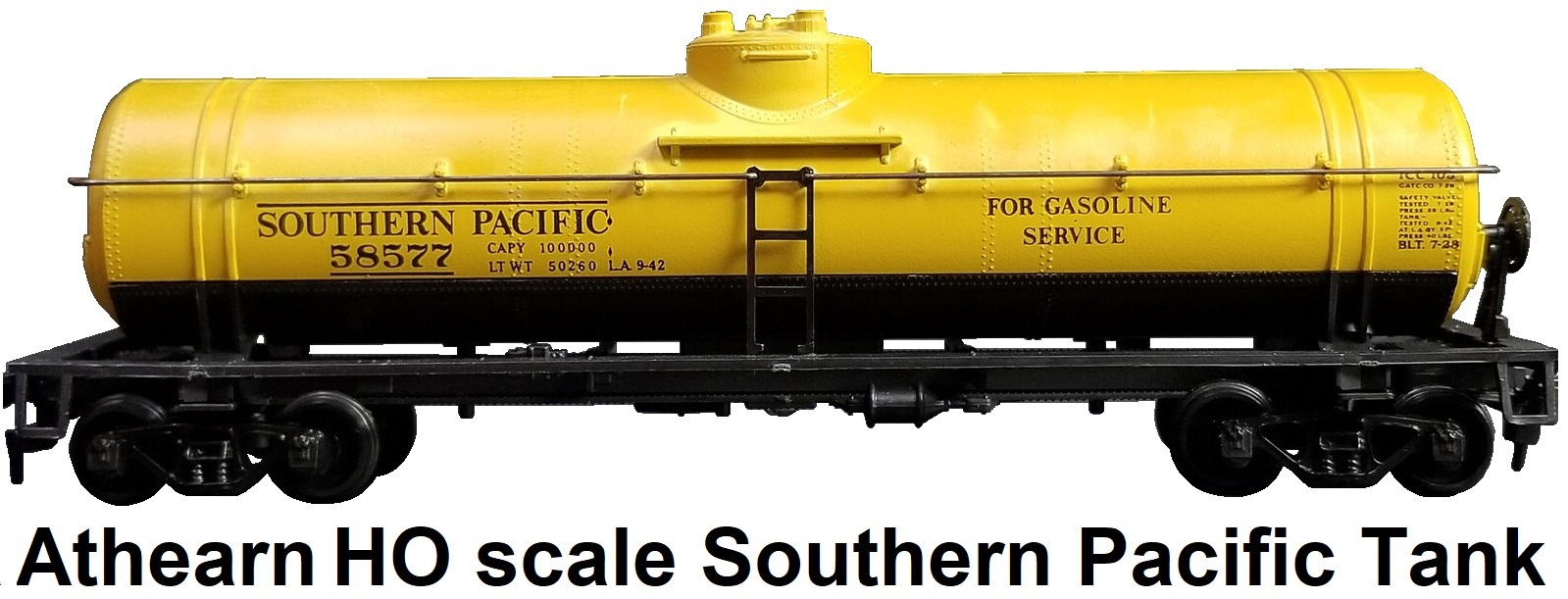
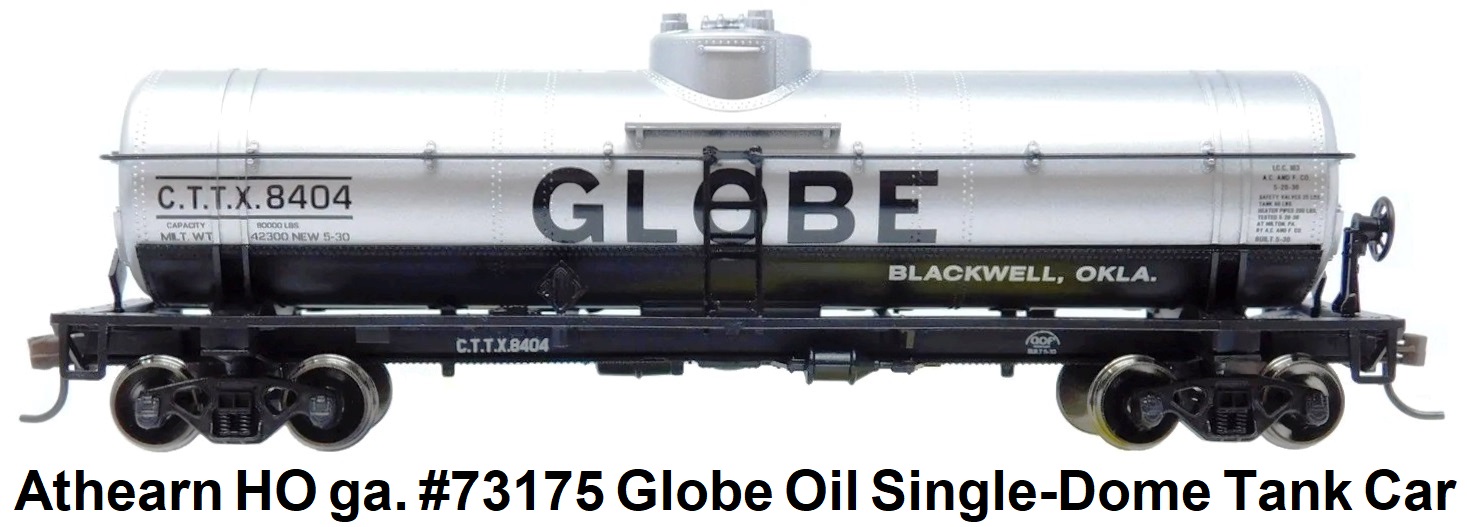
Athearn HO gauge 62' Tank Cars


Athearn HO gauge 12,000 Gallon Triple Dome Tank Cars
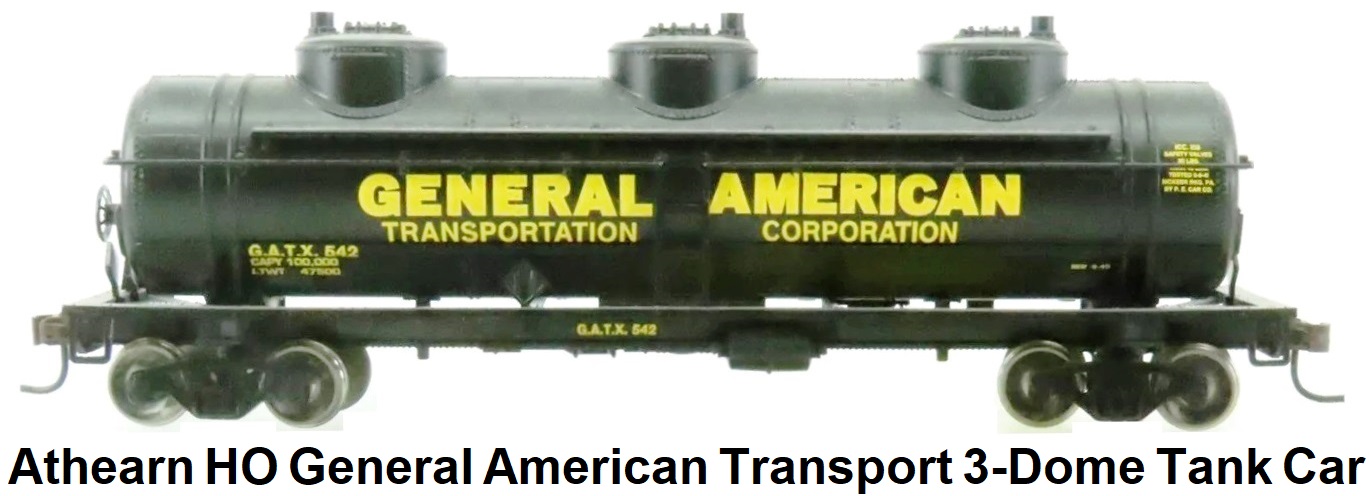
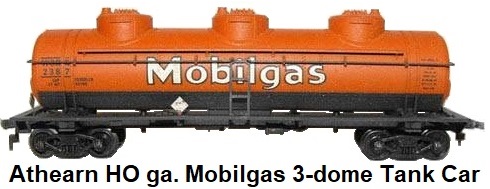

Athearn HO gauge 40' Chemical Tank Cars

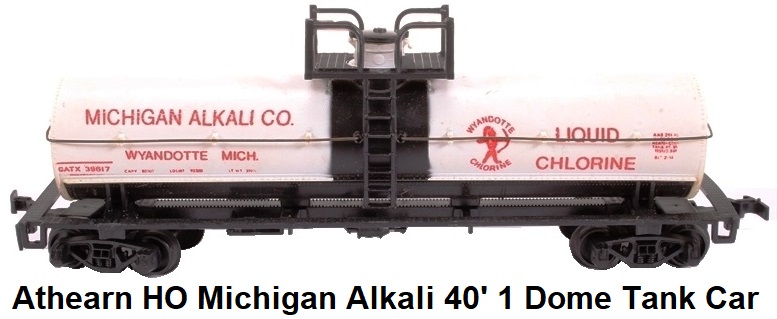
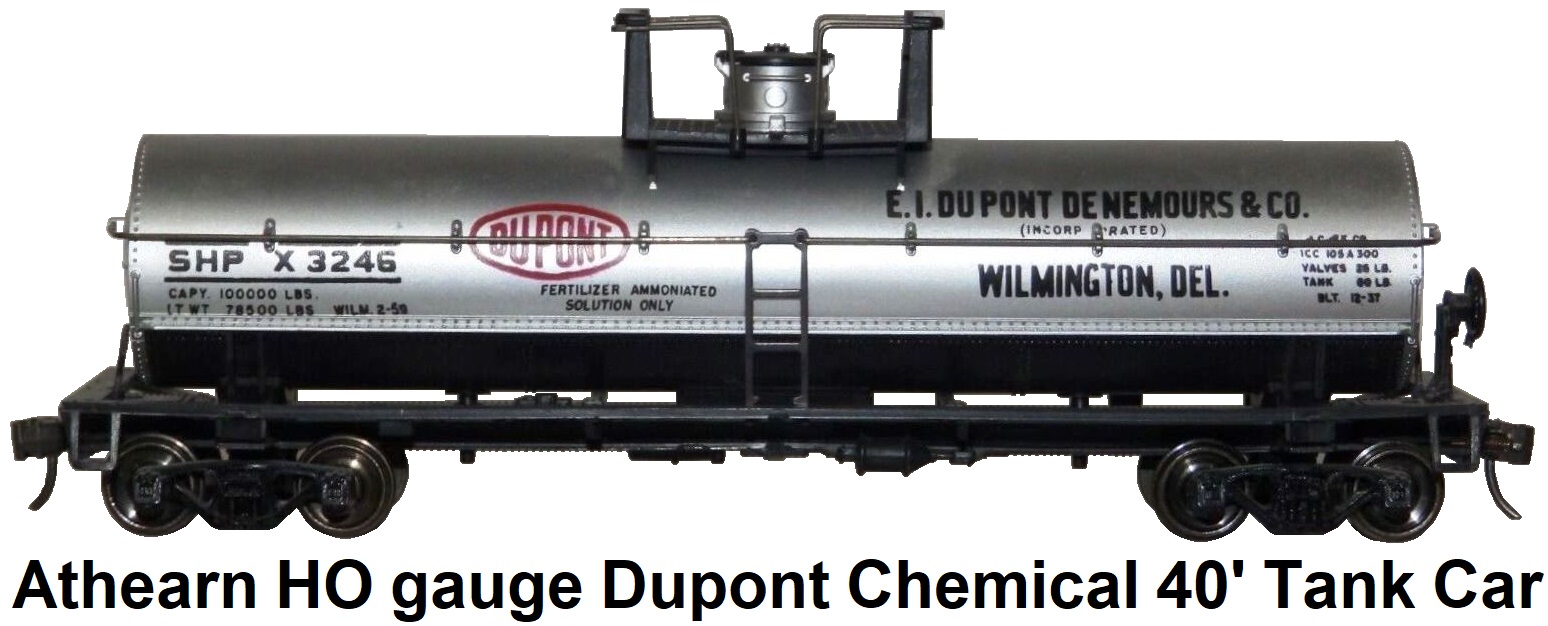
Entry-level HO scale models fall under the Athearn Roundhouse banner. The Athearn Roundhouse name is used
for entry-level HO scale models. The line includes locomotives with a 21-pin NEM connector, light-emitting-diode lighting,
and serviceable and repairable components. Freight cars under the Athearn Roundhouse banner are equipped with metal wheelsets
and McHenry knuckle couplers. Complete train sets are also part of the Athearn Roundhouse line. The sets include a locomotive,
freight cars with metal wheelsets, Kato Unitrack-compatible nickel silver rail, and a transformer. The Athearn name is to be
used for all other HO and N scale models. HO scale models in the range includes locomotives (Digital Command Control sound
decoder and DCC ready versions), rolling stock (separate, factory-applied grab irons; etched-metal crossover platforms where
applicable; basic underbody details; and multiple body styles per prototype), and vehicles (fire trucks, semi trailers, and
intermodal containers). In N scale, products in the Athearn line include locomotives (DCC and DCC ready), rolling stock, and
vehicles. To commemorate the new brands, Athearn announced the offering of FMC 50-foot combination-door boxcars with the new
brand logos. The HO scale three-pack was priced at $99.99. The N scale two-pack was priced at $59.99. The boxcars were
scheduled for release in May 2023.

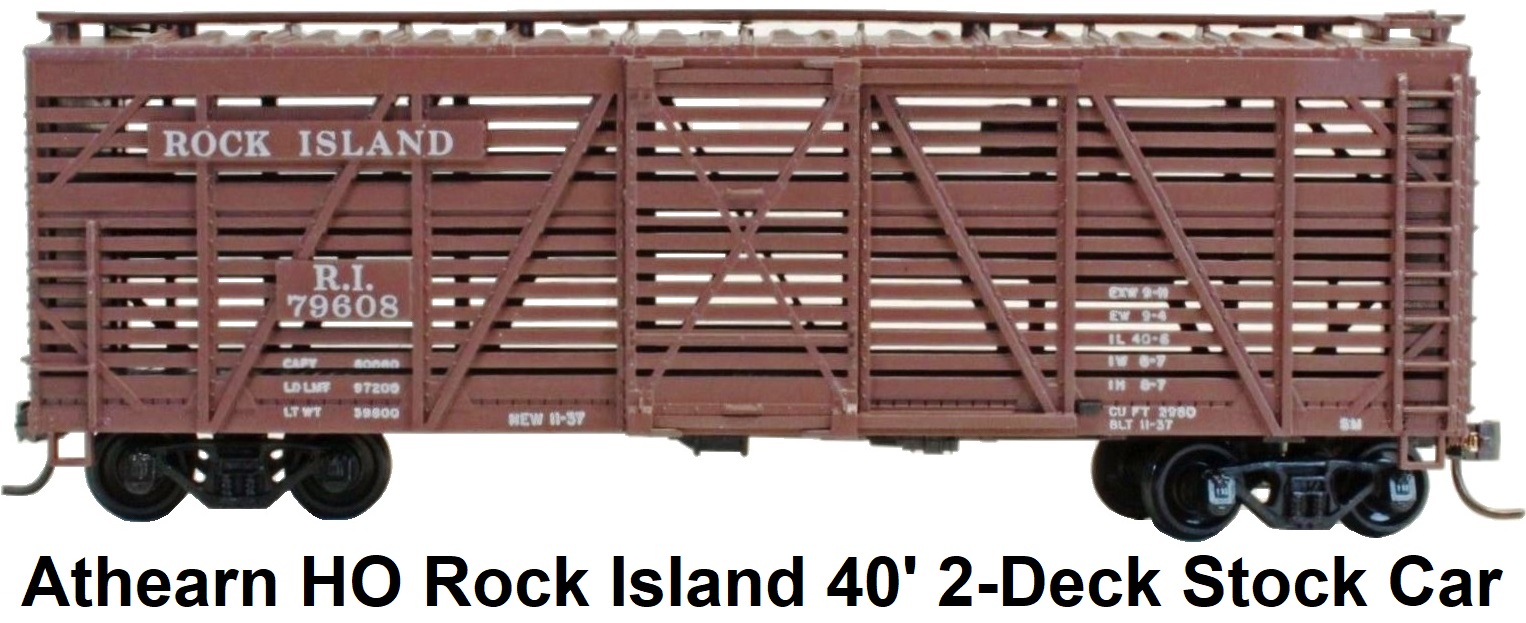

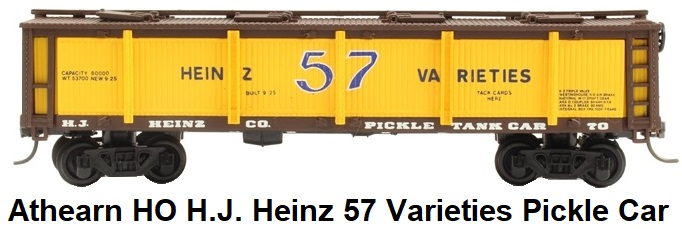
A large portion of the Athearn RTR line traces all the way back to the original plastic kits first
produced in the 1950's and 1960's.
The 40' petroleum tank cars, 40' stock car, bay window and "western" style caboose, 40' and 50' flat cars
with trailers, boats, planes, 40' steel reefer, the streamlined and heavyweight passenger cars, 200 ton
crane (originally all metal), crane tender caboose, derrick car, pulpwood car, 40' quad hopper, pickle car,
rotary snow plow, and the 50' double door box car, all date back and have only seen the most minor changes
and upgrades since their introductions.
Because of the quantity produced and number of years made, nearly all Athearn HO blue box
kits and ready to run plastic injection molded trains and N scale pieces are easy and inexpensive to obtain.
Complete 'O' scale and HO scale yellow box wood and metal kits from the 1940's and 1950's are
more difficult to find however. The challenge, entertainment and value to collecting Athearn trains may
lie in locating unbuilt, original mint kit examples with all the parts and paperwork. This would include
the Athearn, Model Die Casting and Global lines.
Link to Athern web site.
